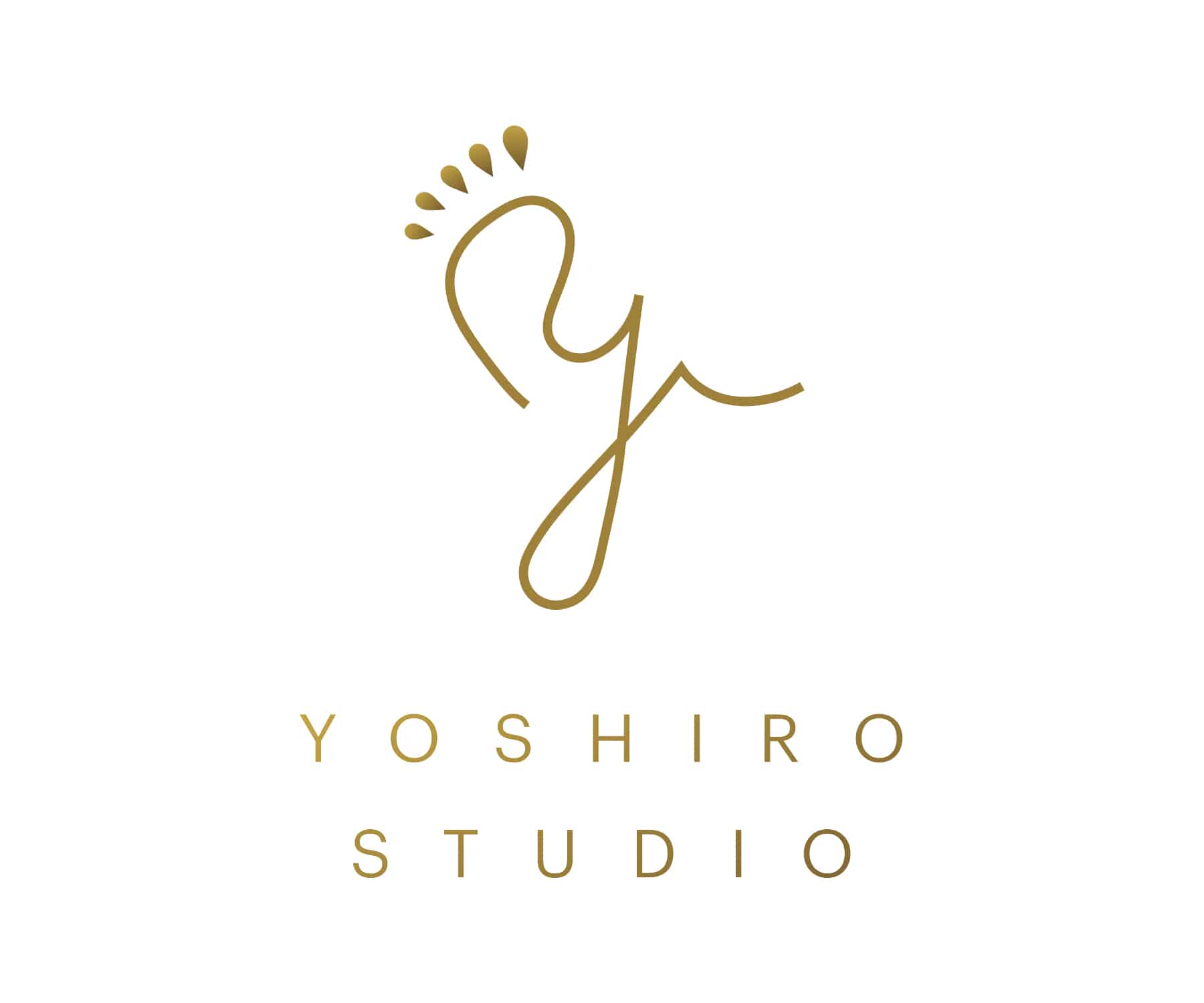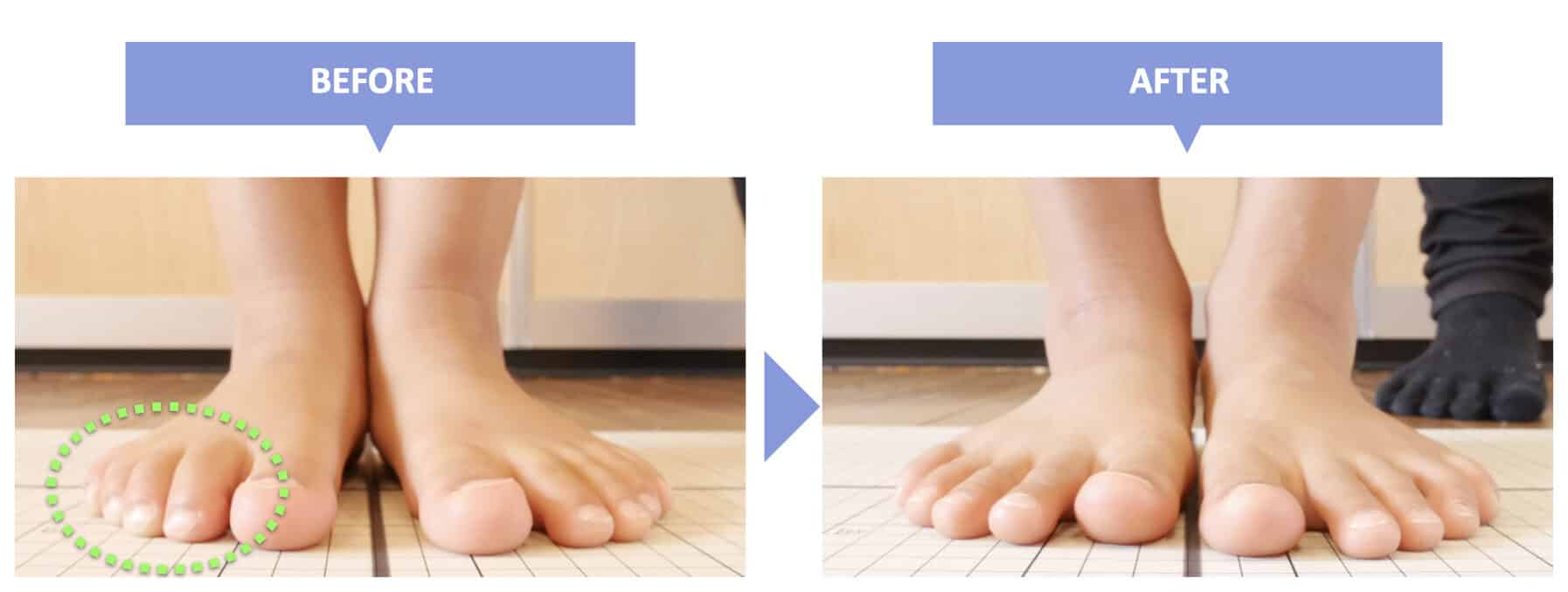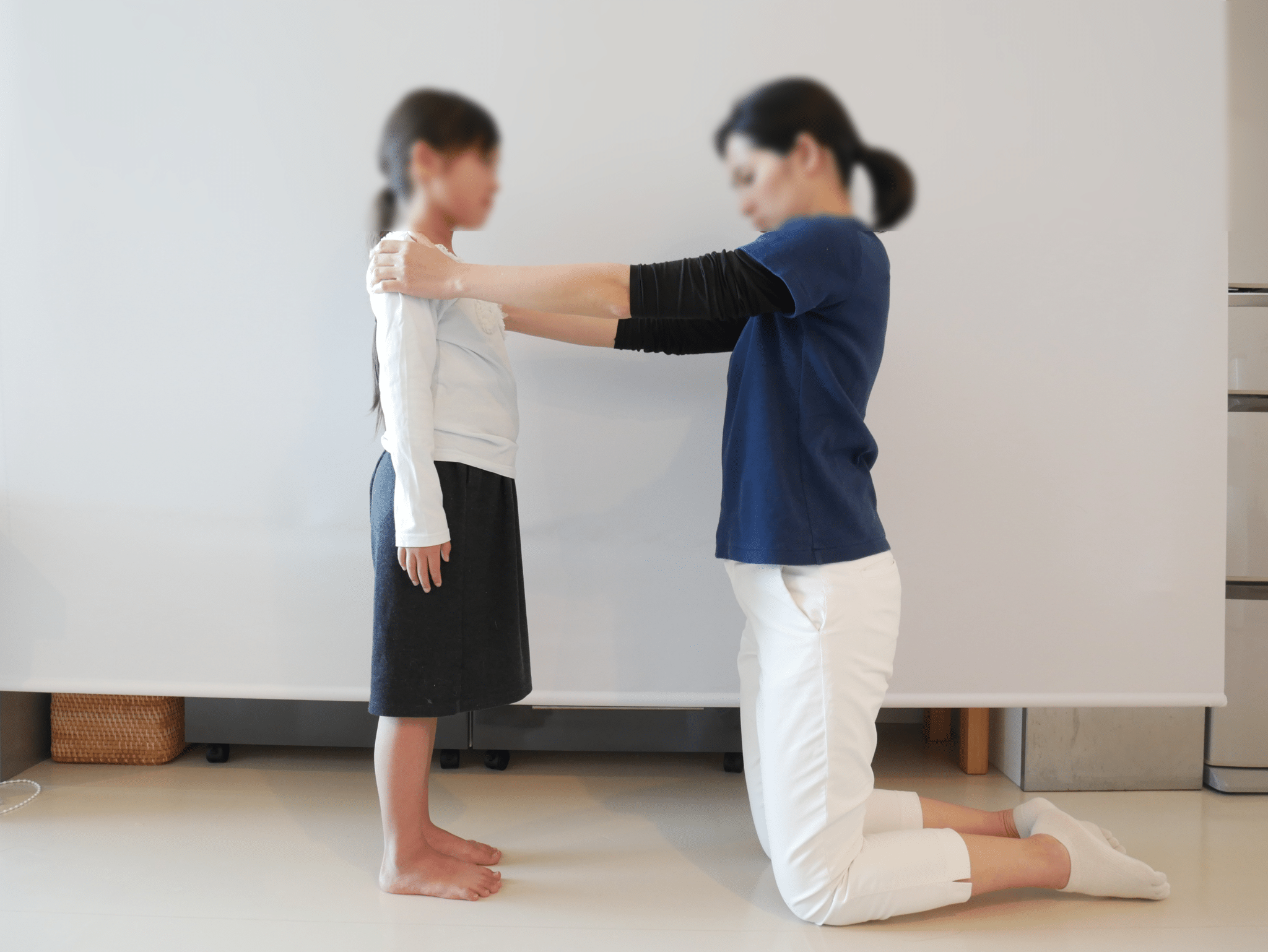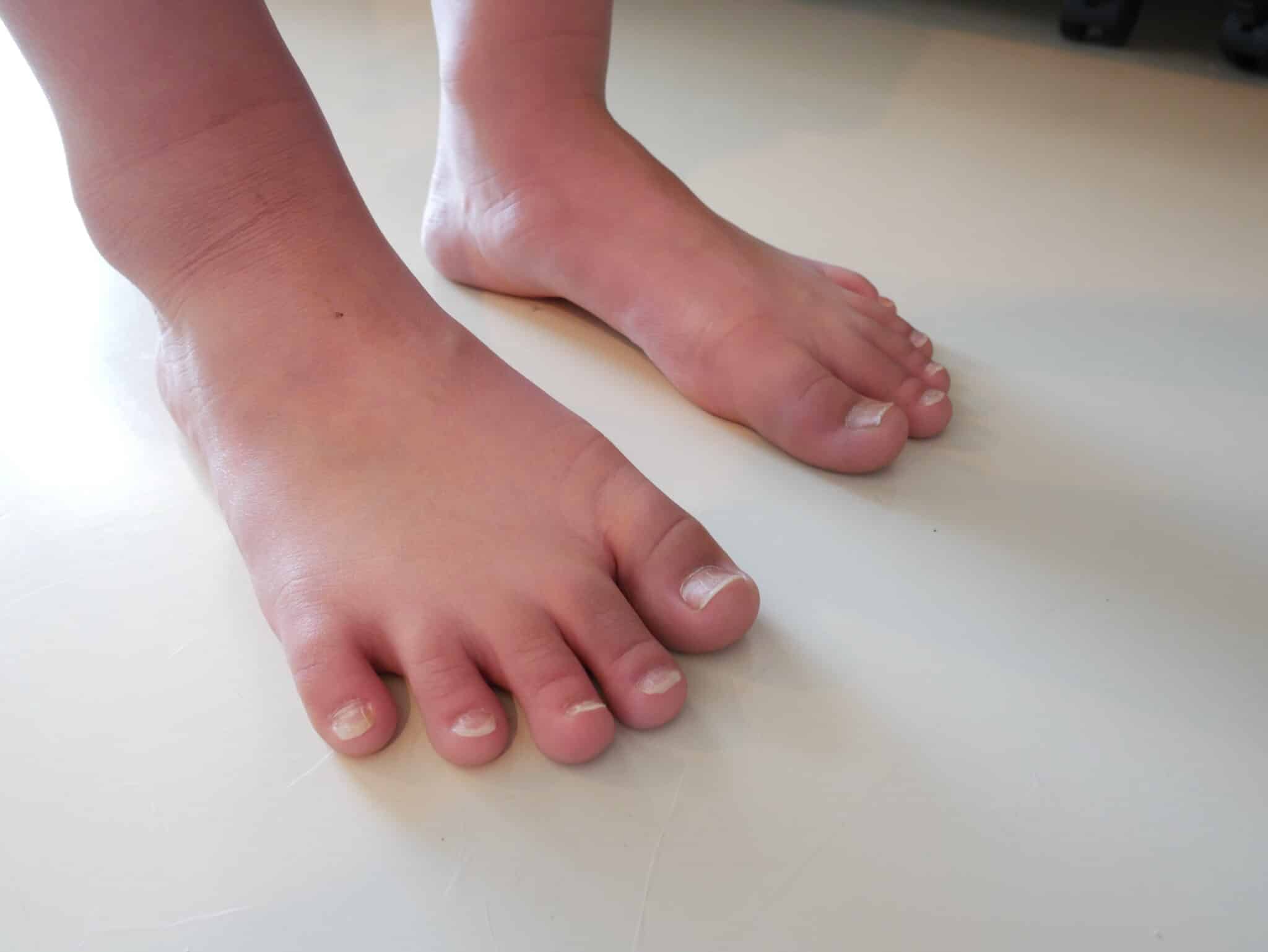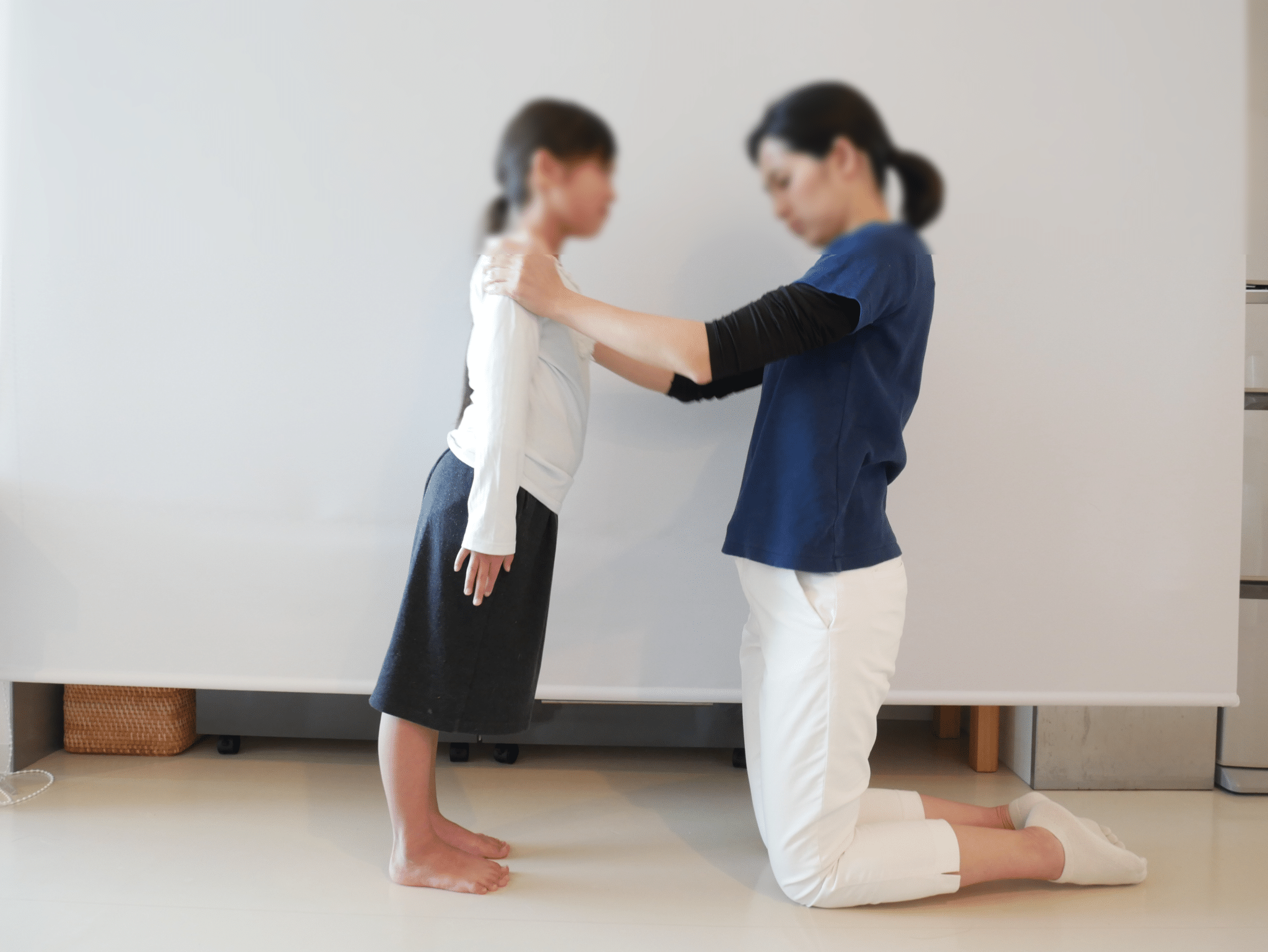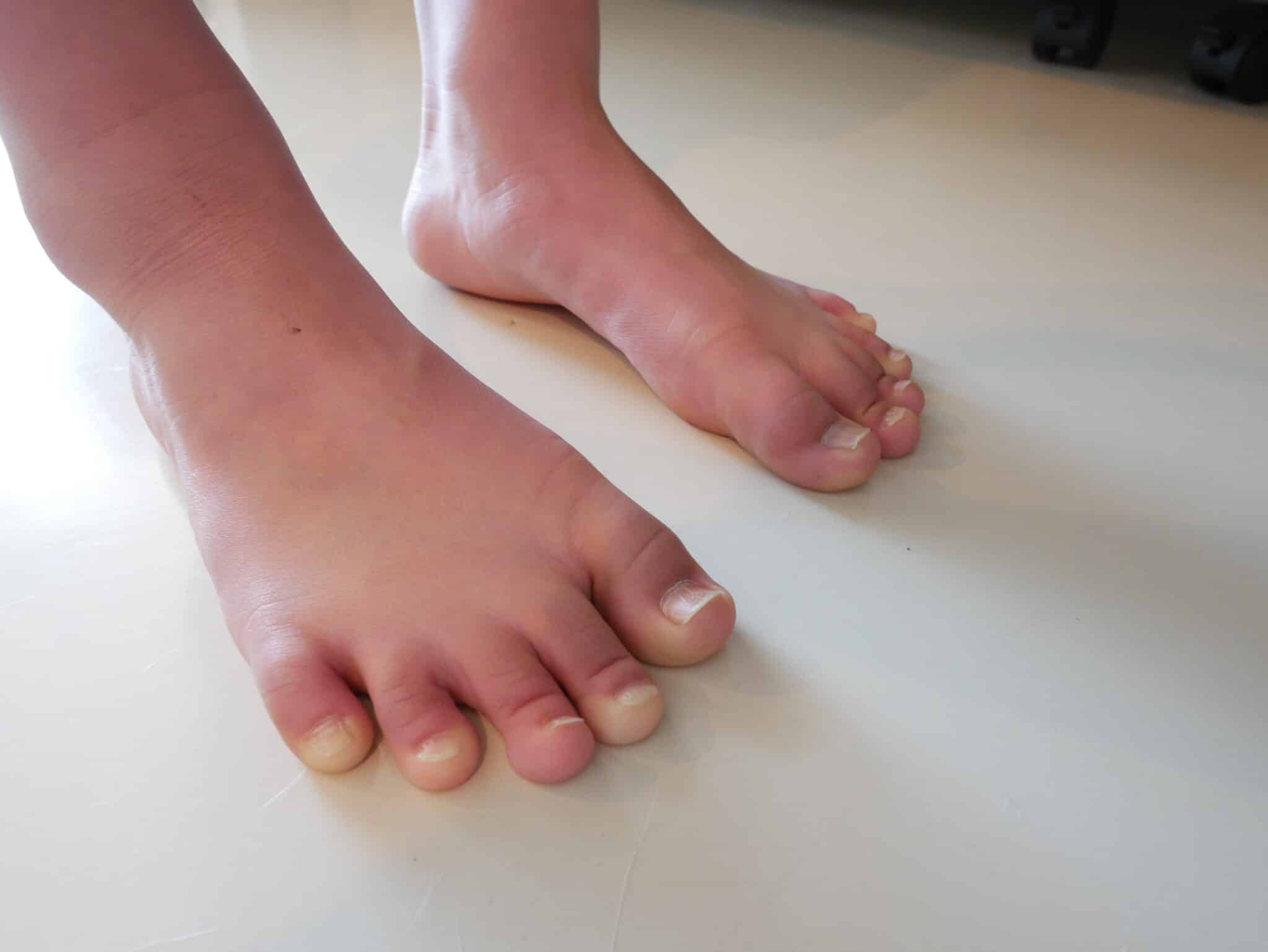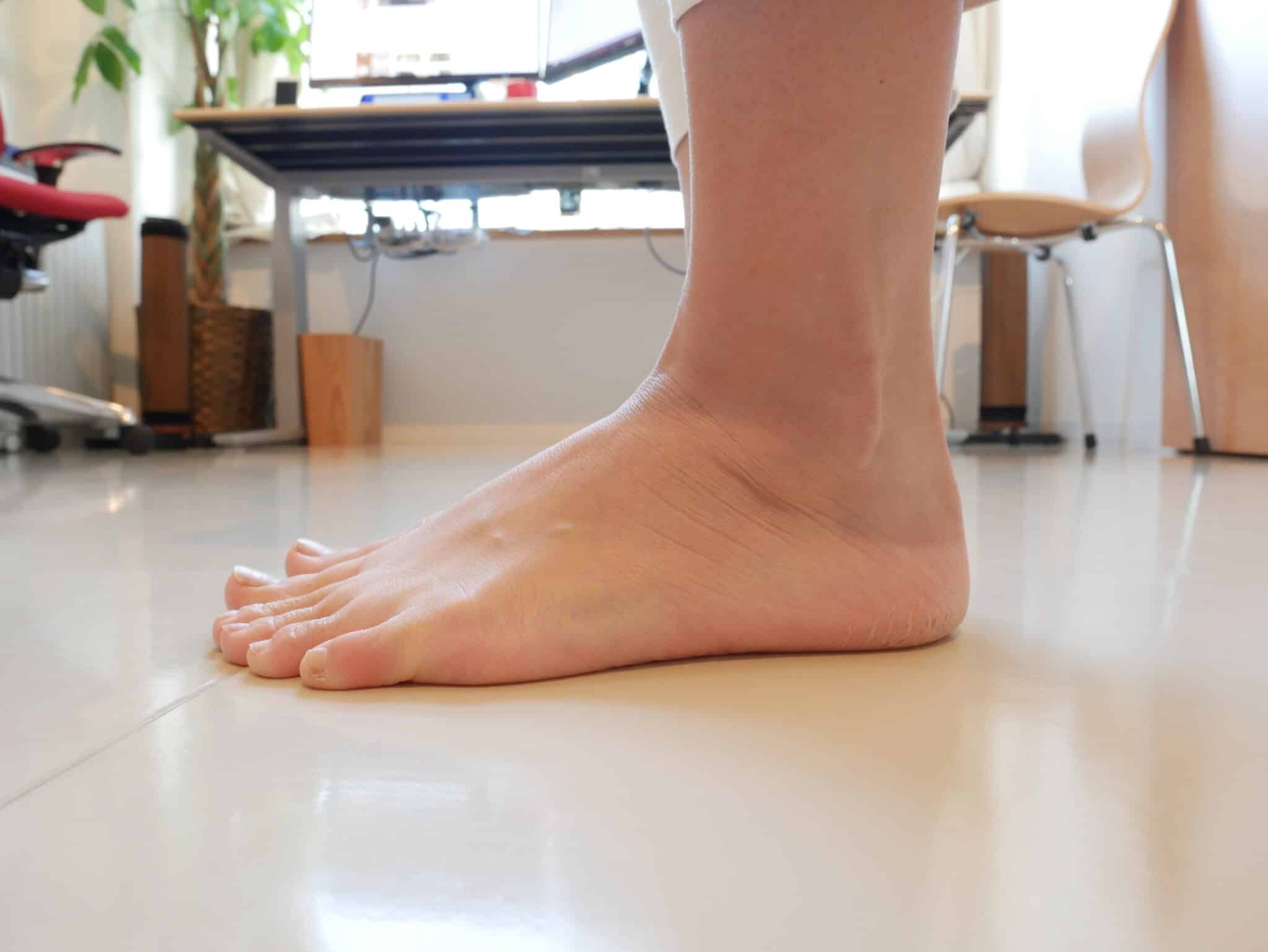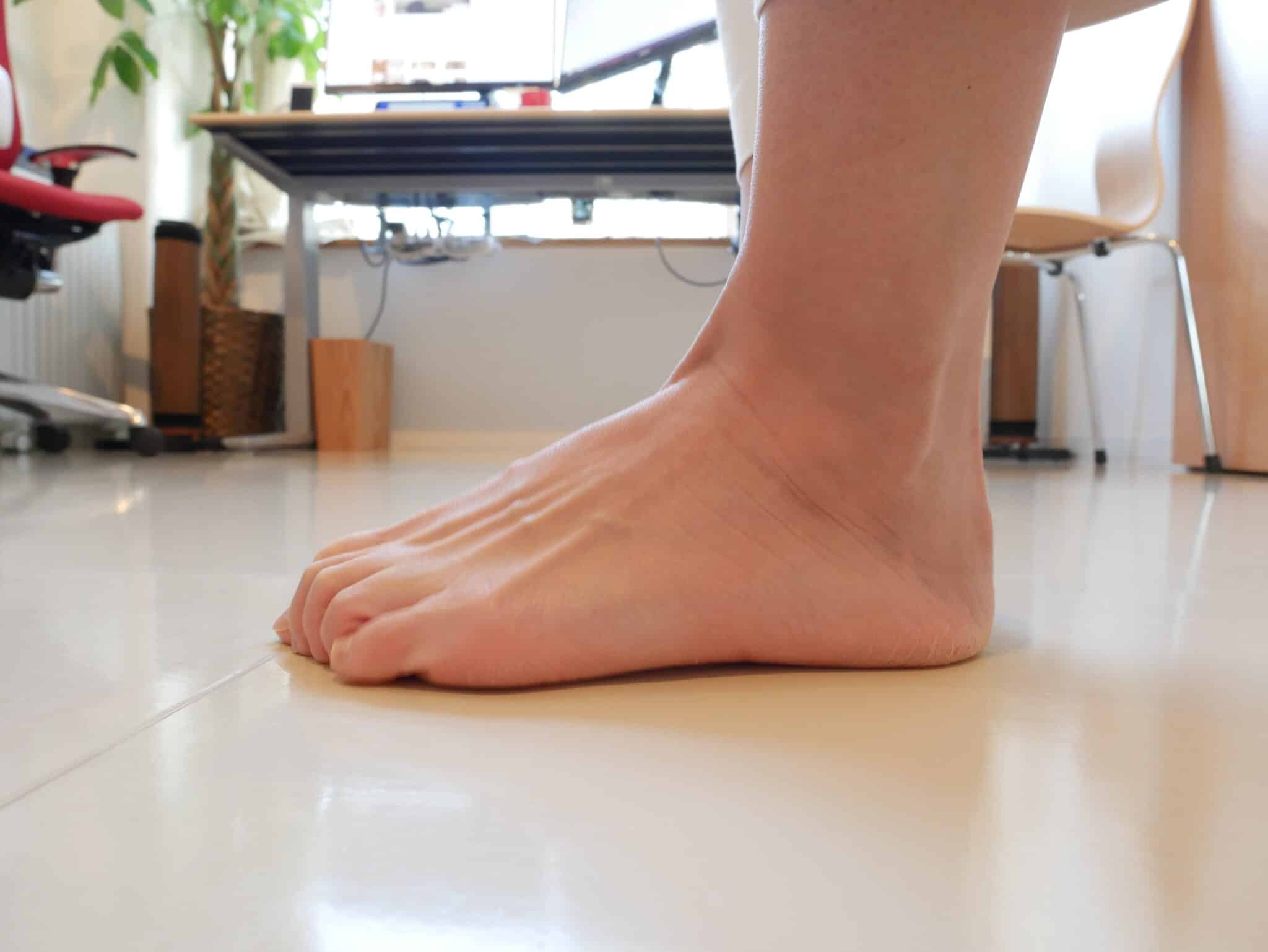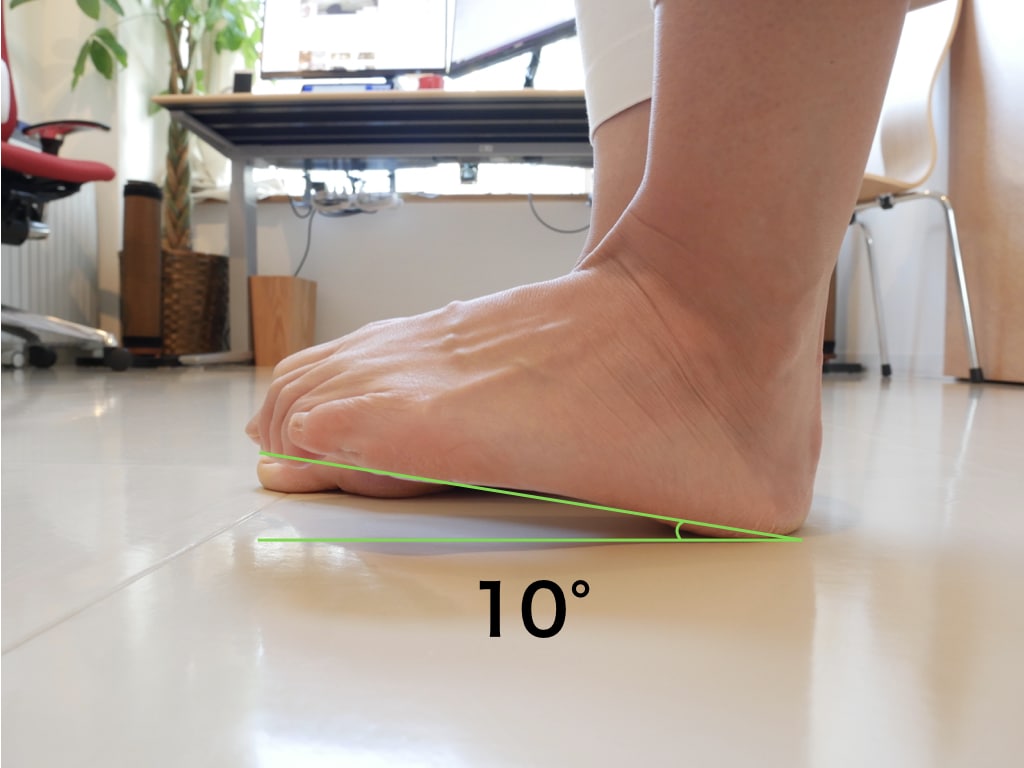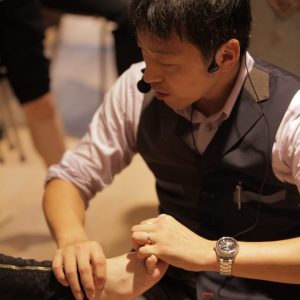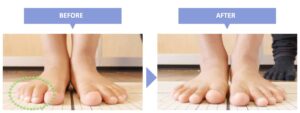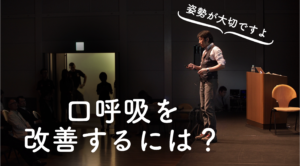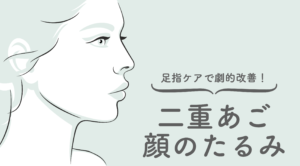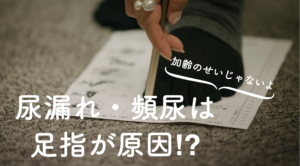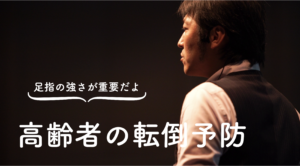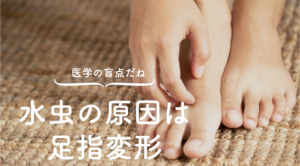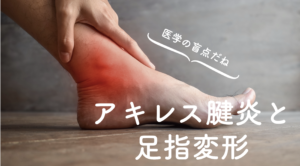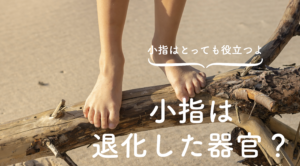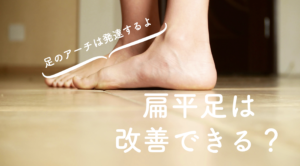What is a bent finger?
It is a condition in which the toes remain bent downward instead of straight. Toes also have a first joint and a second joint, but in a bent toe (hammertoe), the second joint remains bent. The direction of the nail is very obvious, but if you observe it from directly above, you will see that the direction of the nail is different from that of the thumb. As with the fingers, it is normal for the toes to be parallel to the floor.

The treatment of hammertoes at YOSHIRO STUDIO is painless and there are no restrictions on daily activities. We will give you advice on how to improve the condition through self-care while wearing normal shoes. In the case of pain, we will combine the treatment with AKA therapy so that the pain can be removed as soon as possible.
How to identify a bent finger (hammertoe)
In the case of a bent toe, the toe tip is hardened like a callus or the area above the second joint has calluses or blisters. The same is true for those who have a darkened area above the second joint. Many people have a "hidden crouching toe" even though it is usually straight, but this is easier to see if you put weight on the foot. For example, bend your body forward a little while standing. Or do this with someone else. Let your body be straight and try not to lift your heels, and let your weight shift forward as it is. If your toes are bent tightly at that time, it is called a hidden bent toe.
How to identify the hidden bent finger
How to identify a normal bent finger
If it is a normal flexed toe, you can identify it by checking your own foot in a standing or sitting position. It can be more clearly identified by having a picture taken of the front of your foot with a cell phone or other device.
Bending fingers with downward pointing fingers
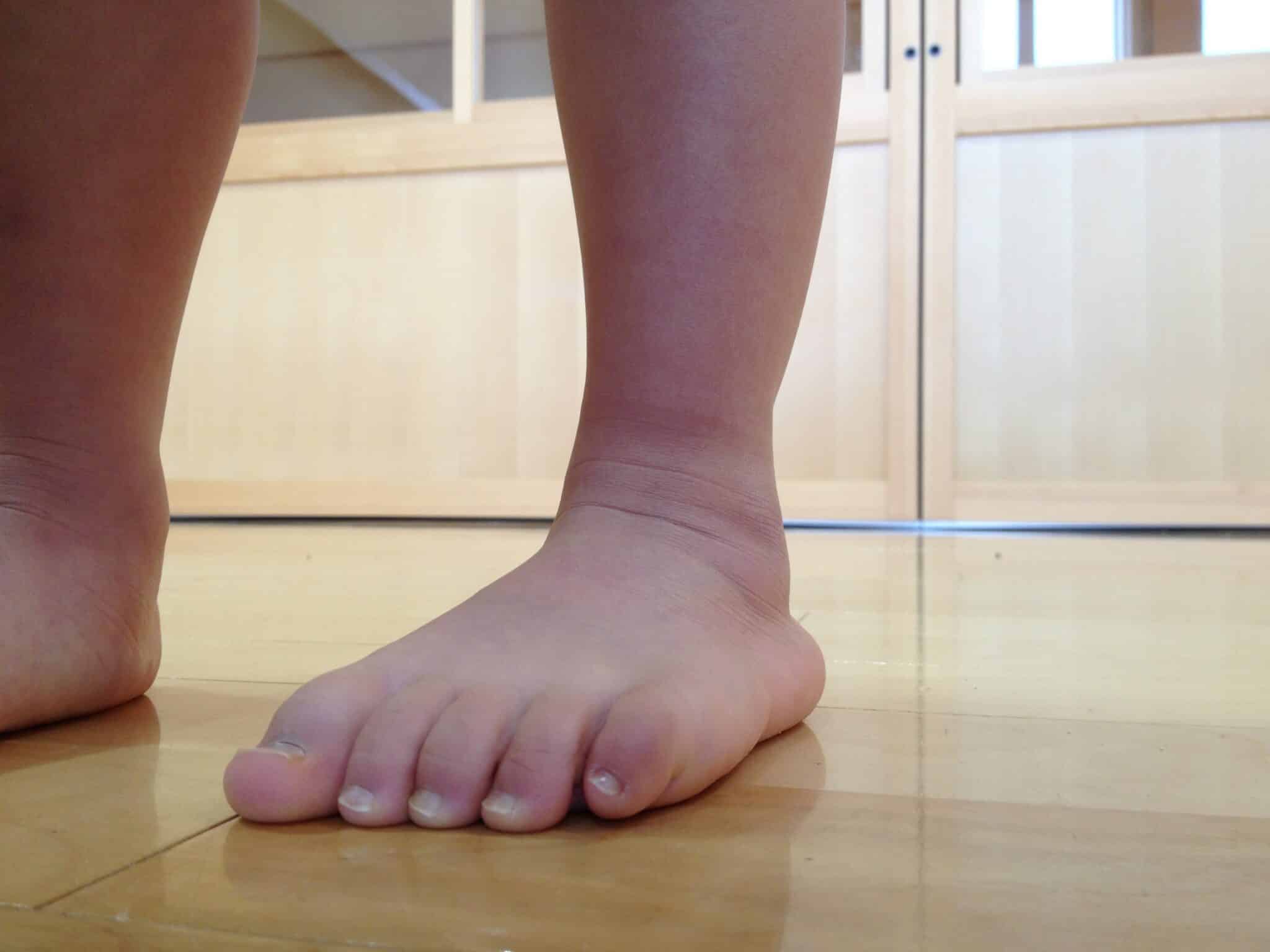
Bent from the root of the toe.
Bending finger with only the nail pointing downward

Only the tips of the toes are bent.
Beware of bent toes, as they make it difficult to lift the toes and can lead to falls.
Raise toes with toes extended.
It will be easier to understand if you do the experiment yourself. First, standing up, with the intention of straightening your toes, try raising only your toes upward with your heels on the floor. Normally, the toes will rise about 20 degrees.
Raise toes with toes bent.
Now let's try to create a "flexed toe" condition. Bend your toes and try to raise your toes as before. You will notice that it is harder to raise your toes as before. This can lead to a fall.
Try jumping, running, walking, etc. with your toes bent. You will find that you cannot jump or run normally. The slightest change can actually cause a loss of mobility.
Percentage of Bending Fingers
Percentage of bent fingers in daycare
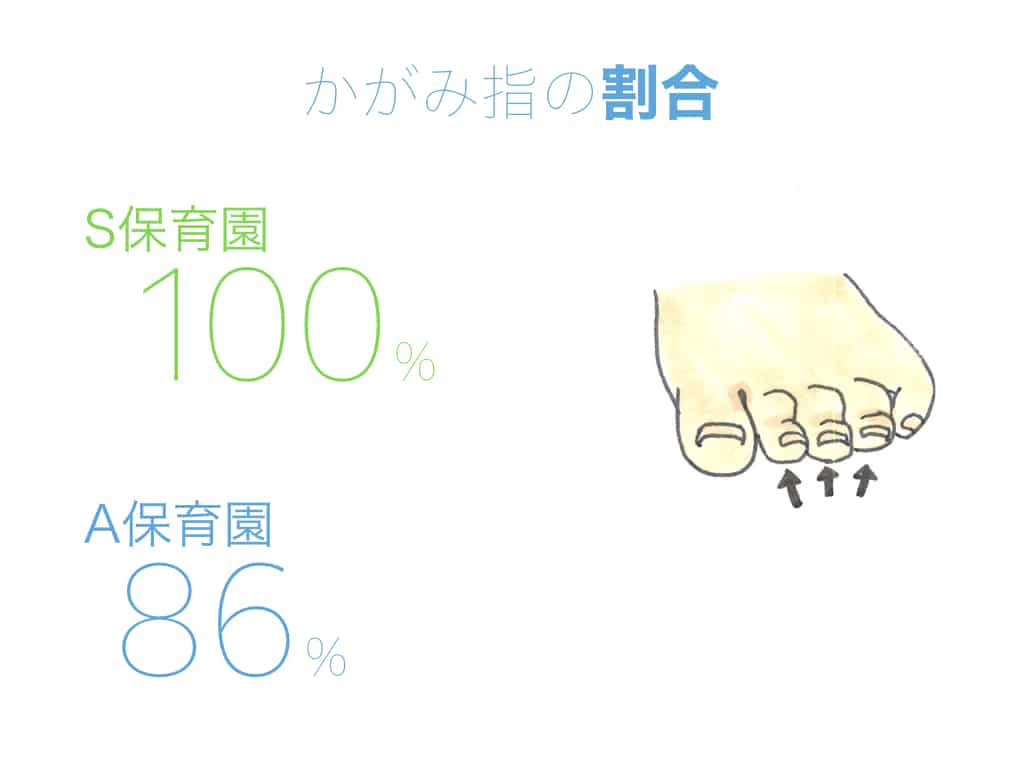
Percentage of center of gravity in standing position
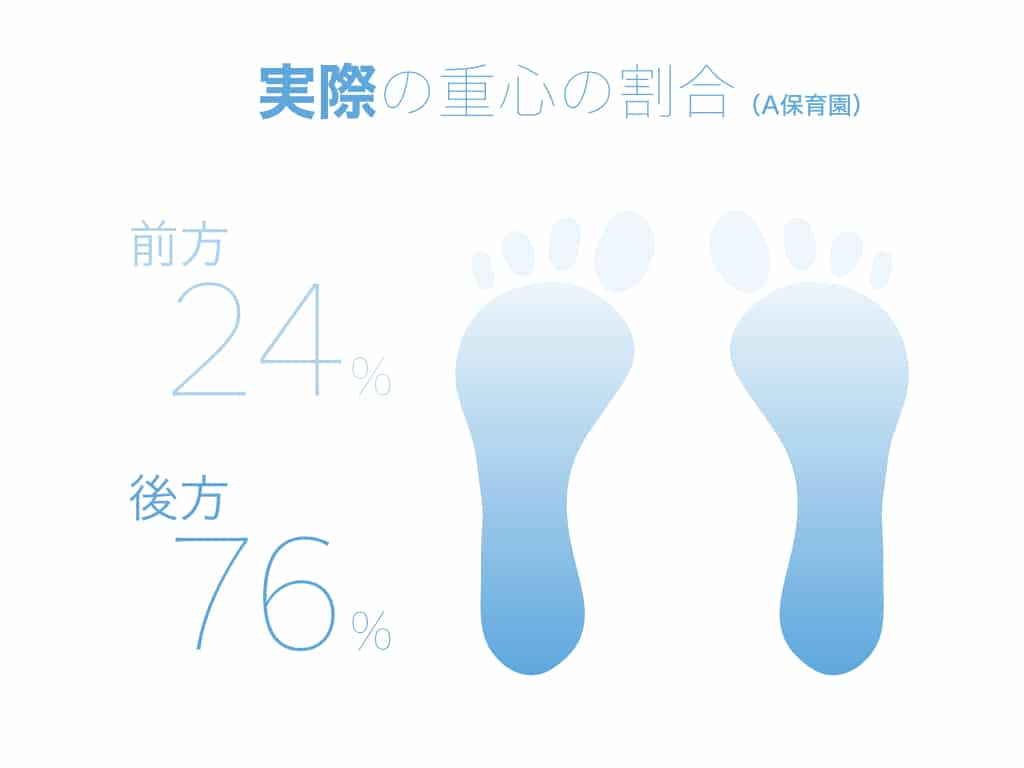
In the more than 10,000 patients we have seen, about 50% or more have a bent toe, and the hidden bent toe is much more than that. Many people do not realize that they have a hidden bent toe, which bends only when weight is placed on one foot when walking, because the toe is usually straight when standing. In a nursery school survey, 86-100% of children were found to have a clawed toe.
What happens when you have a bent finger (hammertoe)?
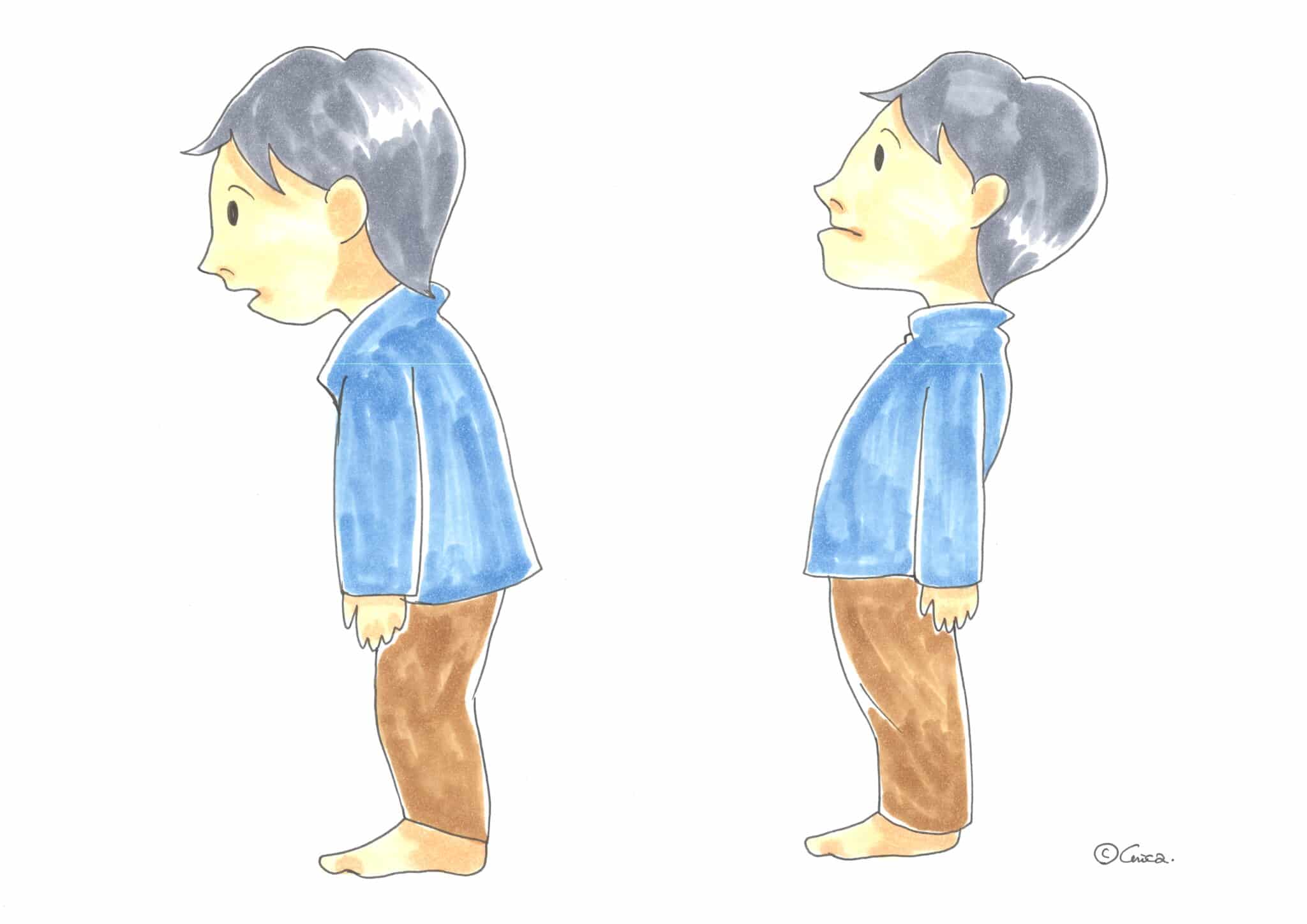
When you have clawed fingers, it is the same as "floating fingers" and when you stand up, you will have a "heel center of gravity".The ideal center of gravity ratio is said to be 60% forward and 40% backward, but people with floating toes carry 30-40% of their weight forward and 60-70% backward. This makes them balance on their heels only,They try to balance themselves by bending (hunching) or warping their upper bodies (warping hips).It is one of the body's built-in functions called the postural reflex or recovery response. If this condition continues chronically, the muscles in the back and hips remain overstressed, causing back pain, stiff neck, and stiff shoulders. This is also the cause of what is called "straight neck.
Also,Bending toes make it harder to lift your toes, making it easier to trip and fall over in the middle of nowhere.Dangers. Recently, not only are the elderly falling and breaking their femurs, but an increasing number of children are falling and breaking their front teeth, which has become a social problem.
What are the causes of flexed fingers (hammertoes)?
In most cases, shoes that are too large (sneakers or pumps) or have loose laces, etc.Caused by "slipping" in footwearIt is. It can also be caused by continually wearing slippers, tsutsumi, boots, clogs, sandals, and other footwear that have nothing to hold the foot and footwear in place. When the foot slips inside the shoe, it causes the toes to flex unnecessarily in order to step firmly on the ground. As much as possible, take off slippers and do not wear socks in the house.
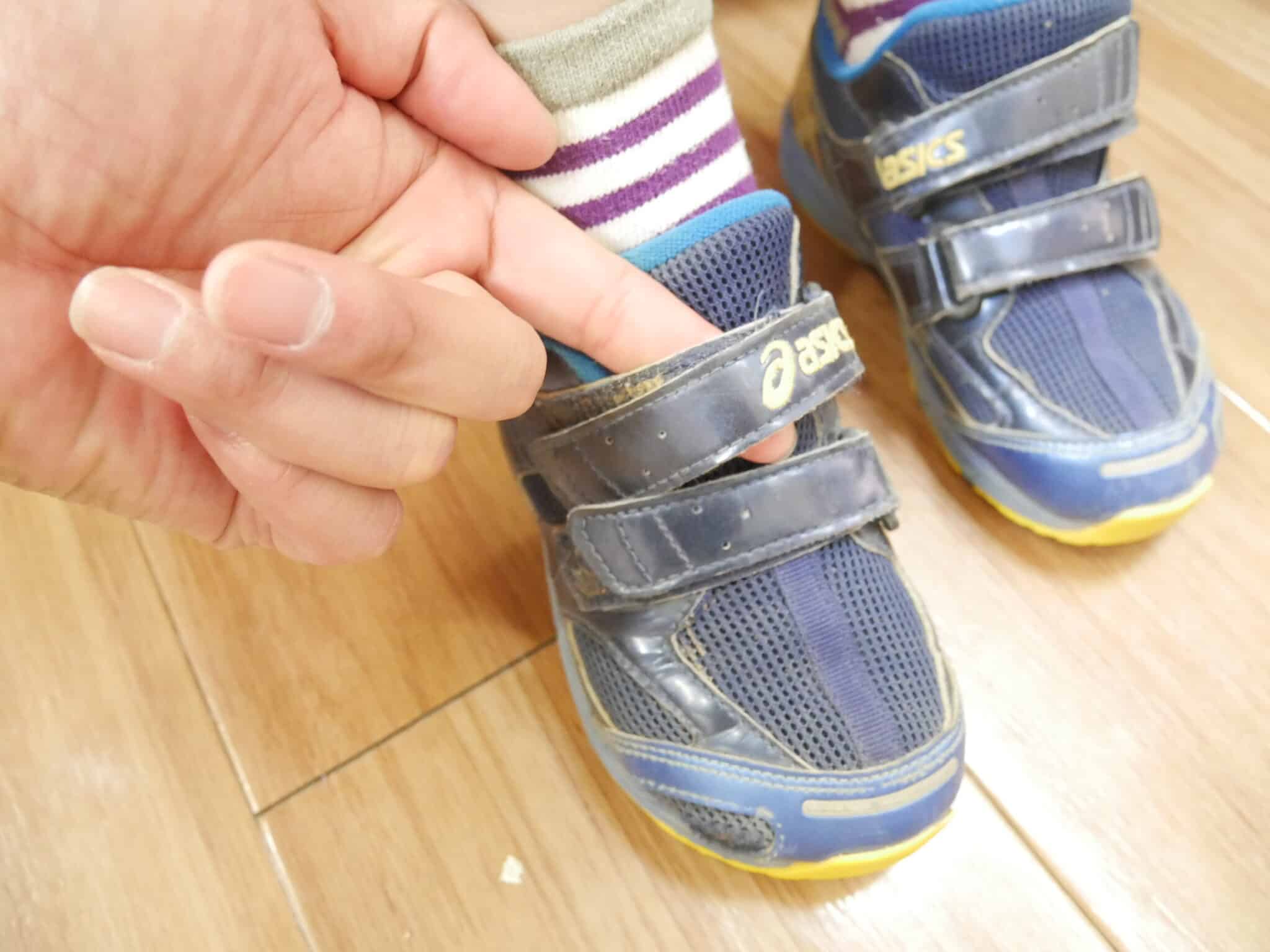
Velcro not tightened securely
How can I improve my flexed finger (hammertoe)?
I recommend "Hironoba Exercise"; just doing it once a day for 5 minutes will improve the situation.. When the bent toe improves, in addition to making it harder to fall, posture improves and back and knee pain improves. If there is still little change, it is highly likely that not only the muscles but also the joints themselves are stiffened, so the use of socks (YOSHIRO SOCKS) to correct the toes is effective.
A case of bent finger improved by Hironoba Exercise
Woman in her 50s, rheumatism, knee pain
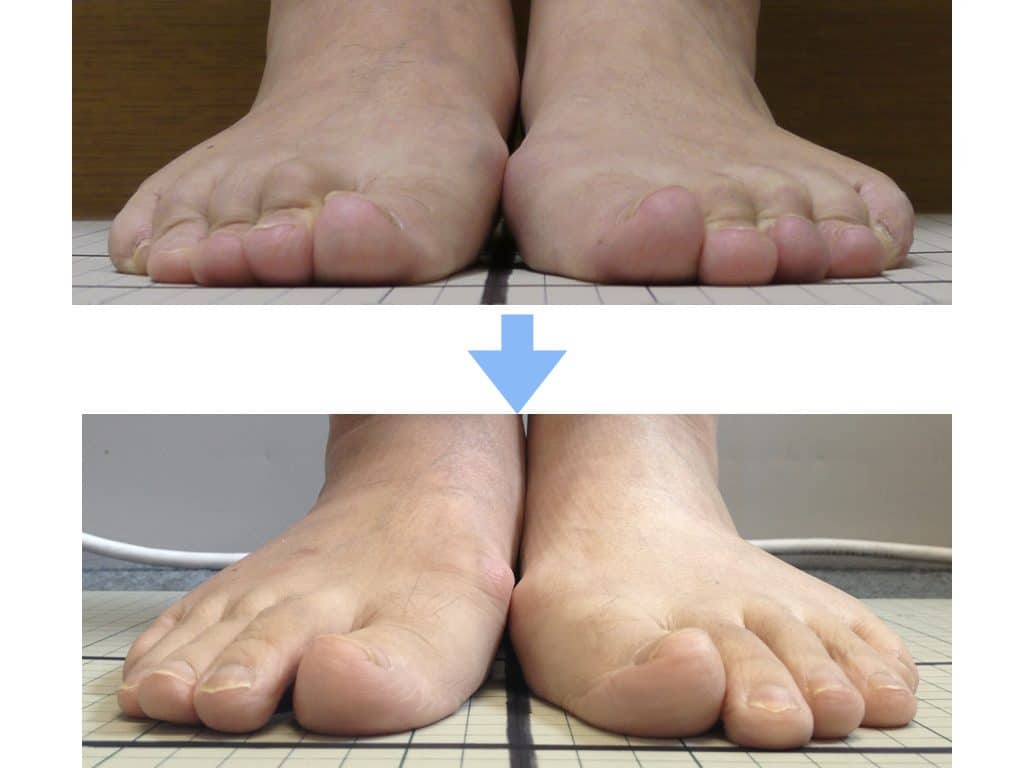
Before Hironoba Exercise: Ankle pain, walking with cane
After Hironoba Exercise: Walking is possible without pain and without a cane
Woman in her 50s, bending finger, knee pain
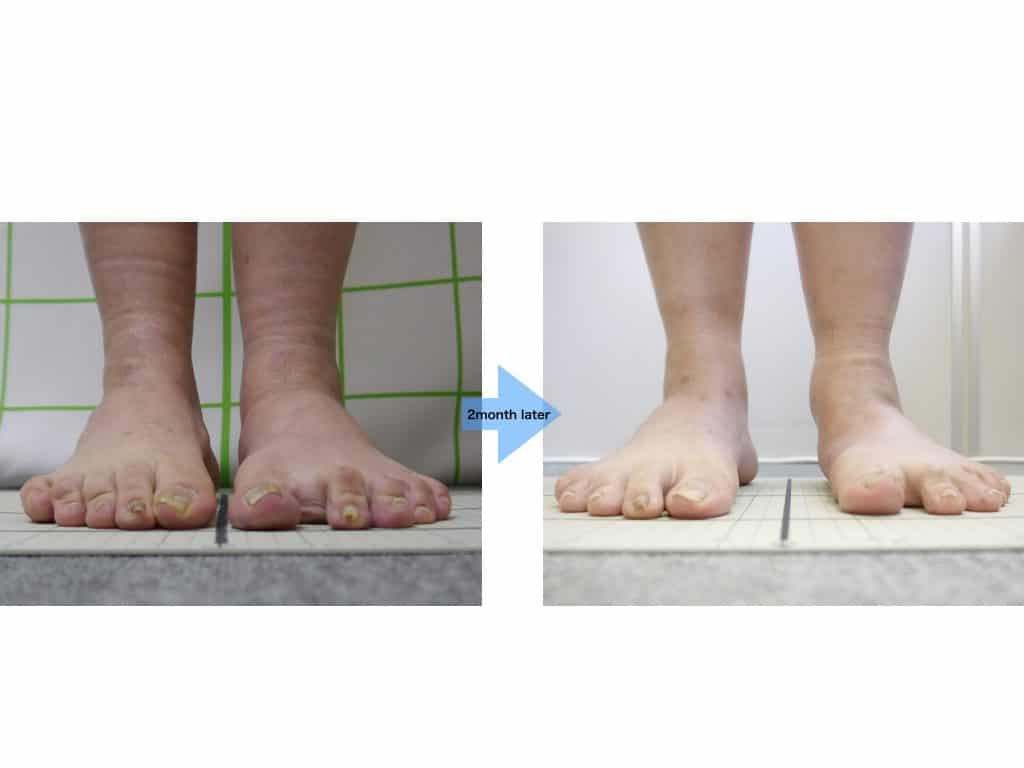

Teenage male, bending toe, unexplained foot pain
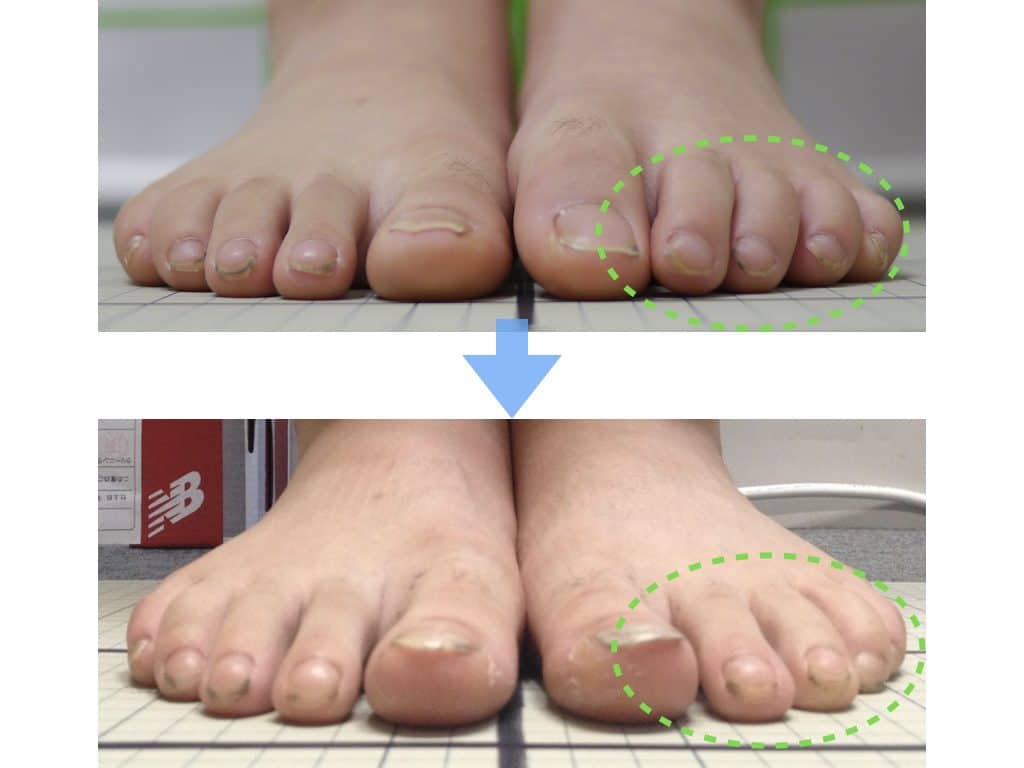
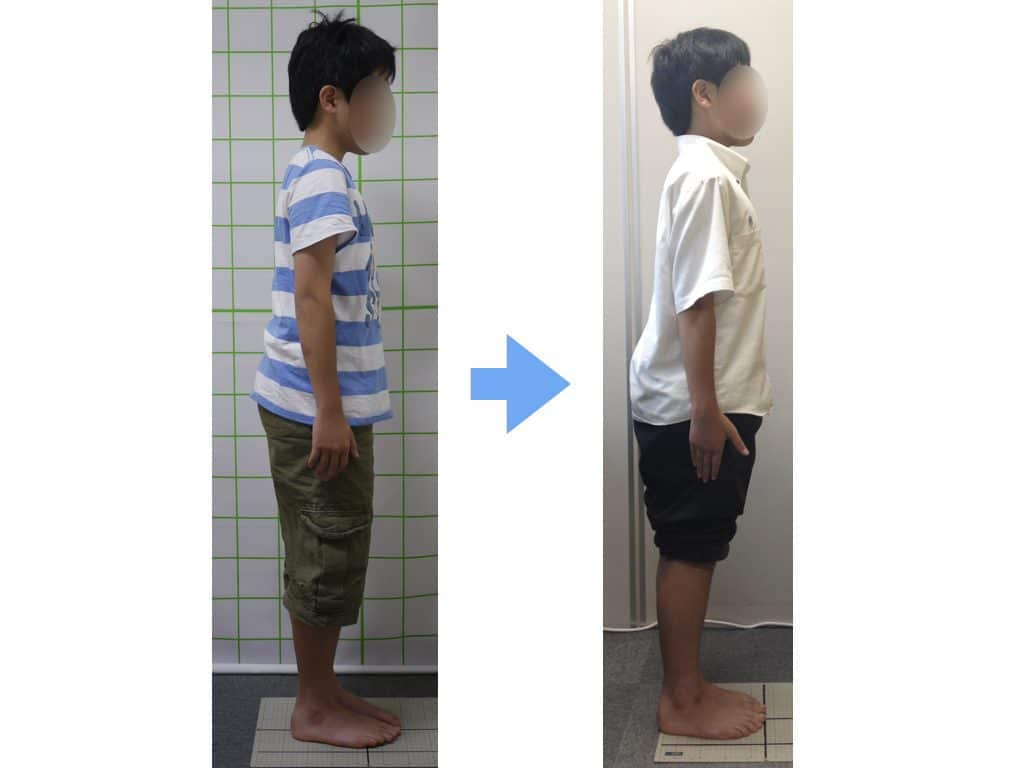
Woman in her 60s, herniated disc
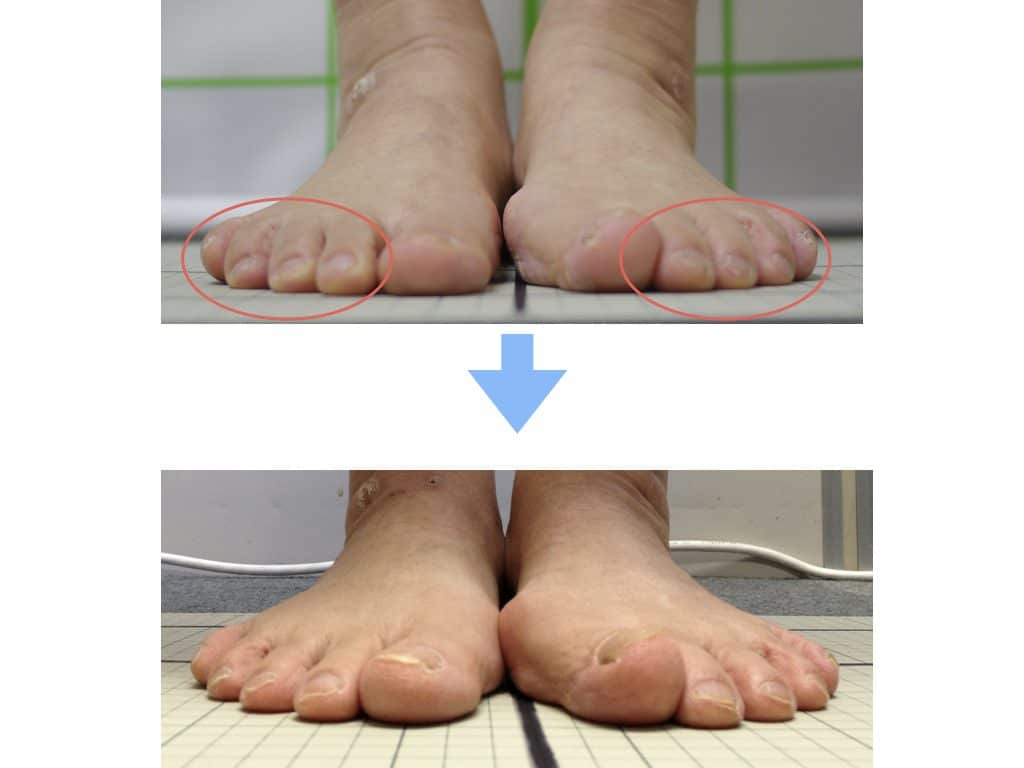

What is toe dysfunction?
Bent toes result in decreased function of the toes as the person walks without using them. Walking with a diminished toe may not result in as much change in knee pain, back pain, or poor posture as one would like. In such cases,Exercise after regaining toe function can be more effective than you think.I am sure you will.
Check the following three points to see if your toes are not functioning properly. Just because you cannot do these three points does not mean that you will be able to do them with practice. More than that,By extending the time of the Hironoba exercises, toe function can be regained more quicklyThe following is a list of the most common problems with the
par
If the space between the toes is so wide that the index finger of your hand can fit between the toes, you have passed the test. There is no problem if you can line up straight across and keep it that way for at least 30 seconds.
rock (in rock-paper-scissors game)
Can you do enough goo to make a cobble like the fingers of your hand? If you can bend firmly from the third joint, you have passed the test.
scissors (in rock paper scissors game)
If the space between the toes is so wide that the index finger of your hand can fit between the toes, you have passed the test. There is no problem if you can line up straight across and keep it that way for at least 30 seconds.
Restore toe function with Hironoba exercises.
Let's try the Hironoba Exercise!
The "hiro-no-va exercise" is a toe and foot stretching exercise in which the toes are spread (=hiro) and stretched (=no-va). Do it once a day for 5 minutes with both right and left feet together, and you will see results!It is surprisingly easy to do, so let's practice it while watching the video first! Once you know how to do it, you can easily do the exercises before bed, in the bath, while watching TV, or anytime. First of all, try to do it for 3 months.
Longer for those who do not have flat toes.
If you cannot par your toes, or if your toes are severely deformed, try your best to do 30 minutes a day.It is effective to practice "par" immediately after hironoba gymnastics because the leg muscles are soft.It is. First, try to do a clean "par" for 30 seconds.
STEP 1 Sit on a chair or on the floor and place one leg on the thigh.
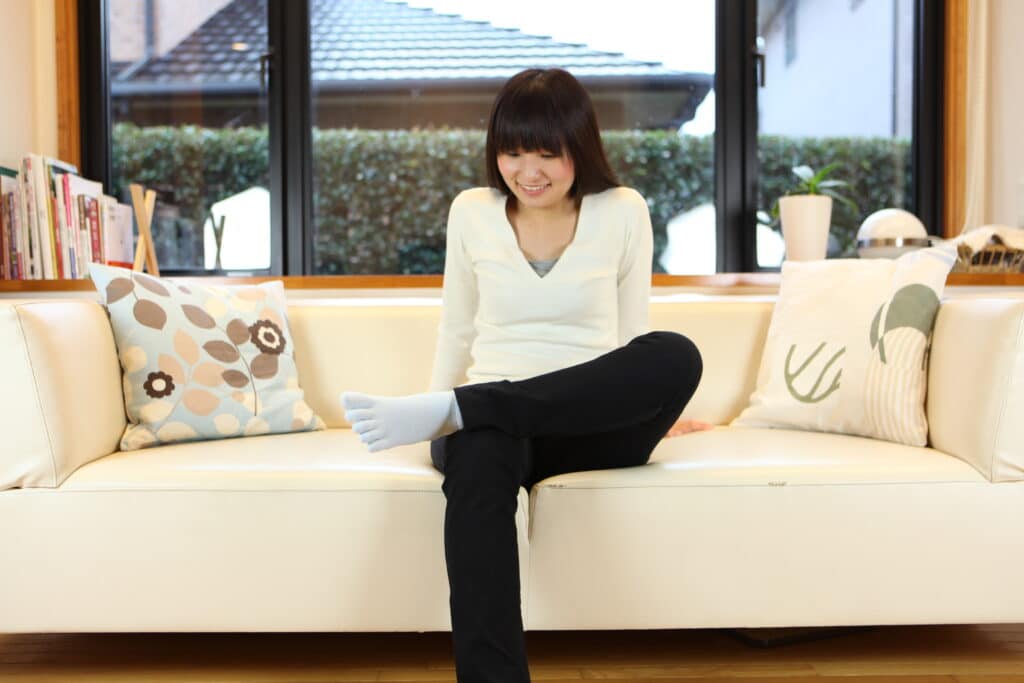
Tilt knees down as far as possible
...to prevent the ankle from turning upward.
Place feet properly on the thighs
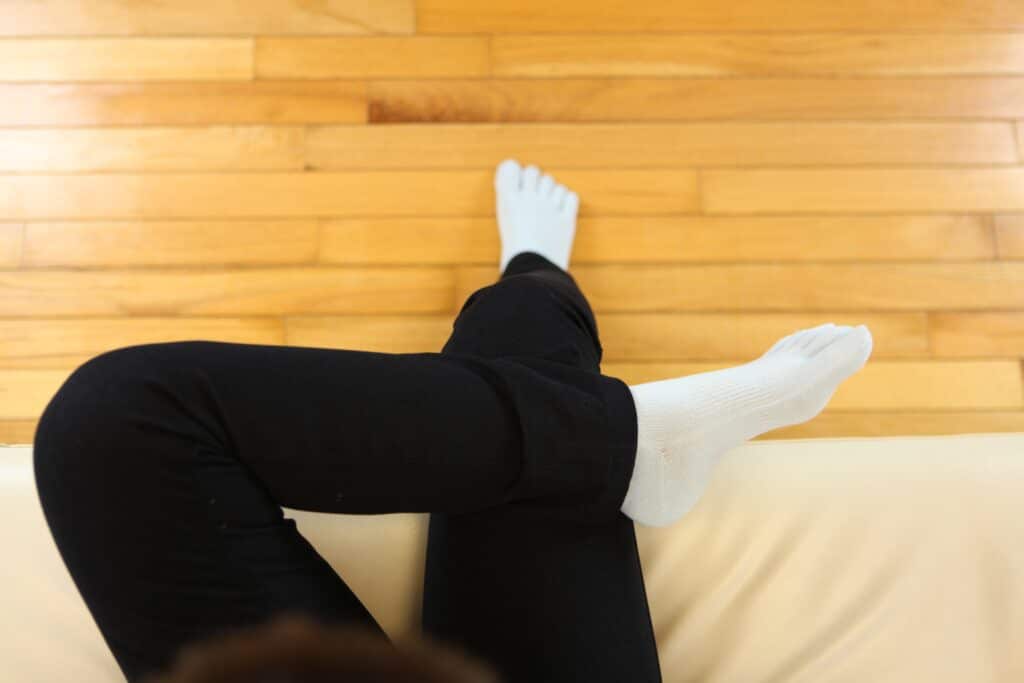
The back of the foot should be turned in firmly.
The ankle should come out slightly from the thigh.
STEP2-1 Place the fingers of your hand between your toes.
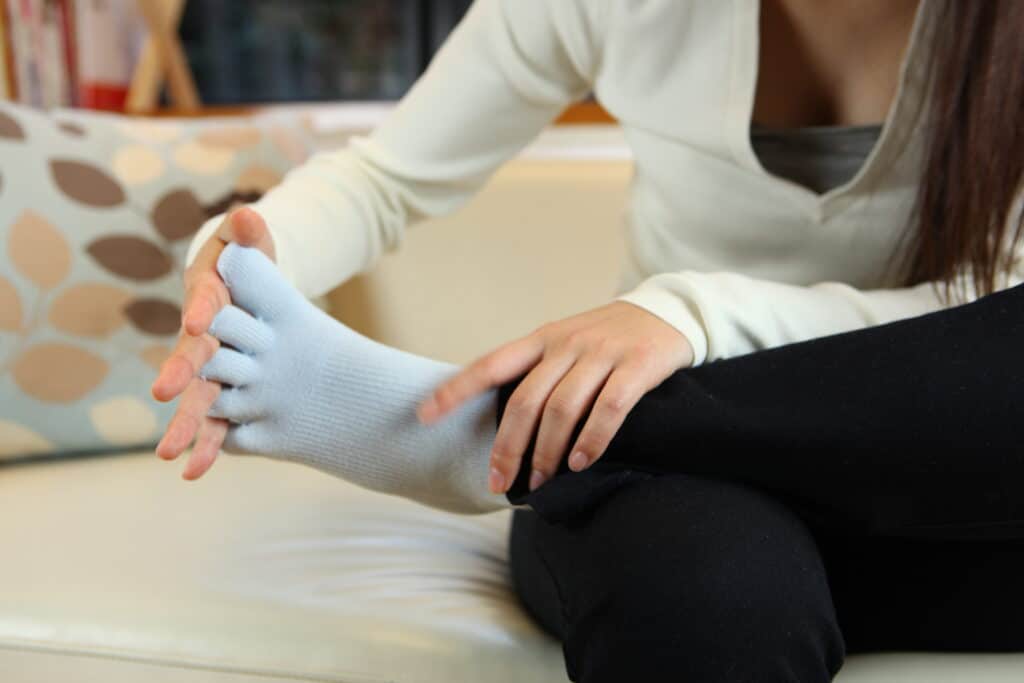
Insert the tip of each toe into the base of the hand, one at a time.
Allow clearance at the base of the toes.
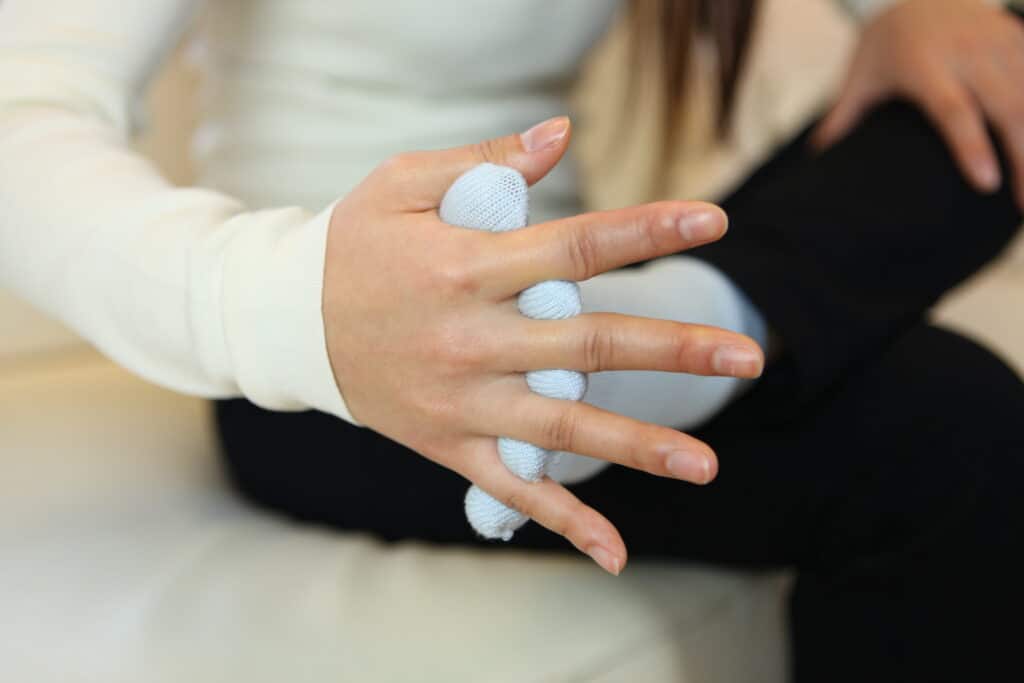
It's like only the tip of the toe rides on the base of the hand.
Keep your toes close to the base of your hands.
STEP2-2 Don't put too many fingers of your hand between your toes.
OK
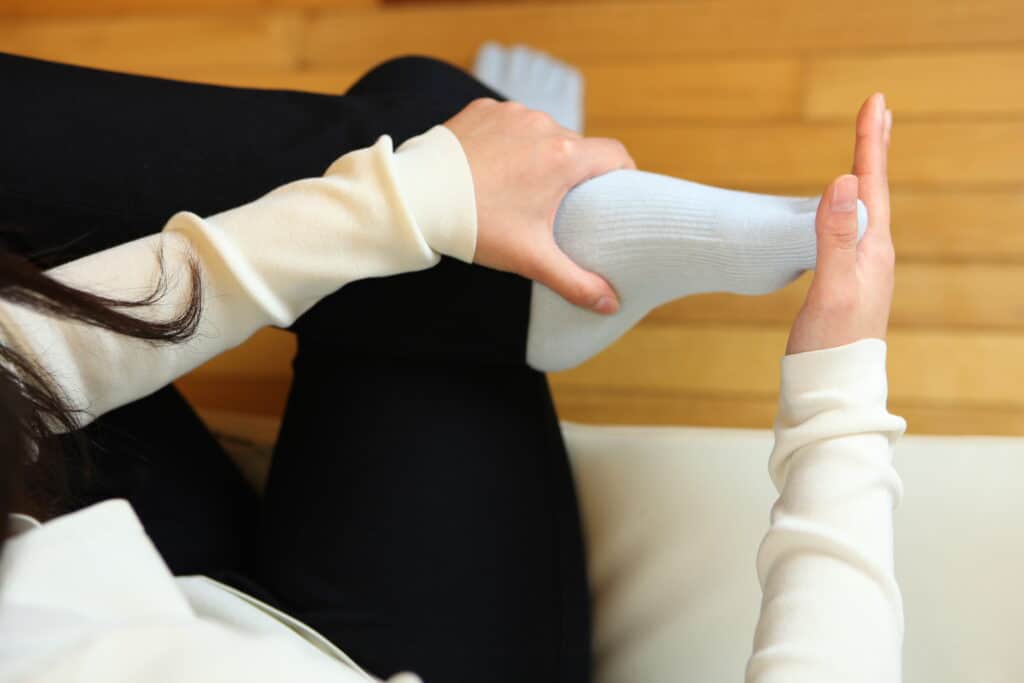
Ideally, the toes should not protrude from the fingers.
gaffe
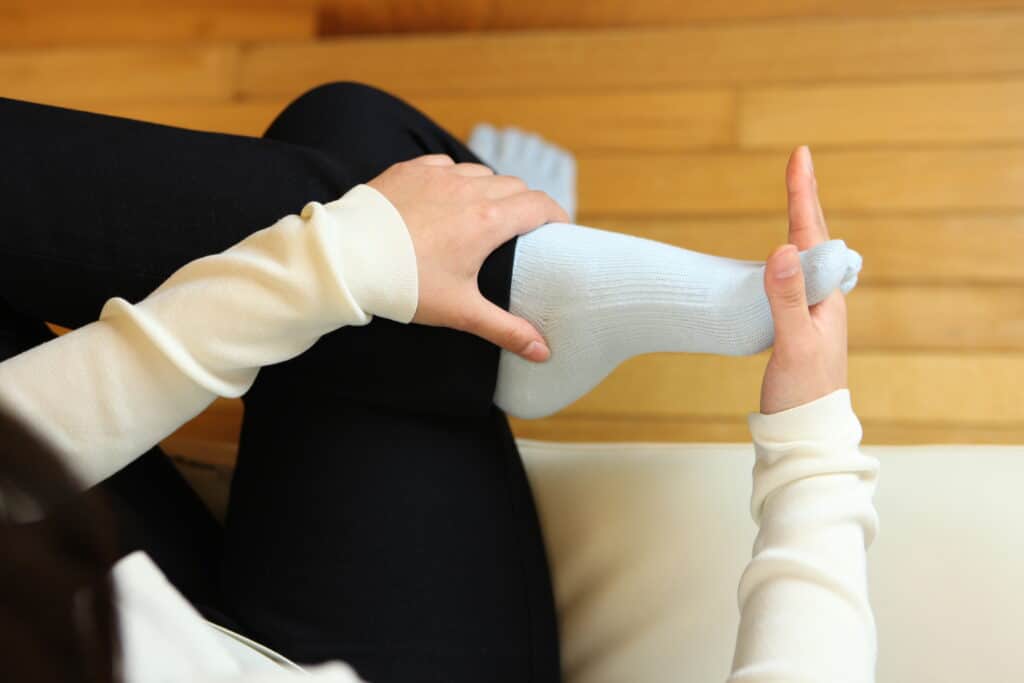
...If you put your fingers in to the base of the toes, you will not be able to bend them properly.
STEP3 Gently grasp the hand with the toes in it.
OK
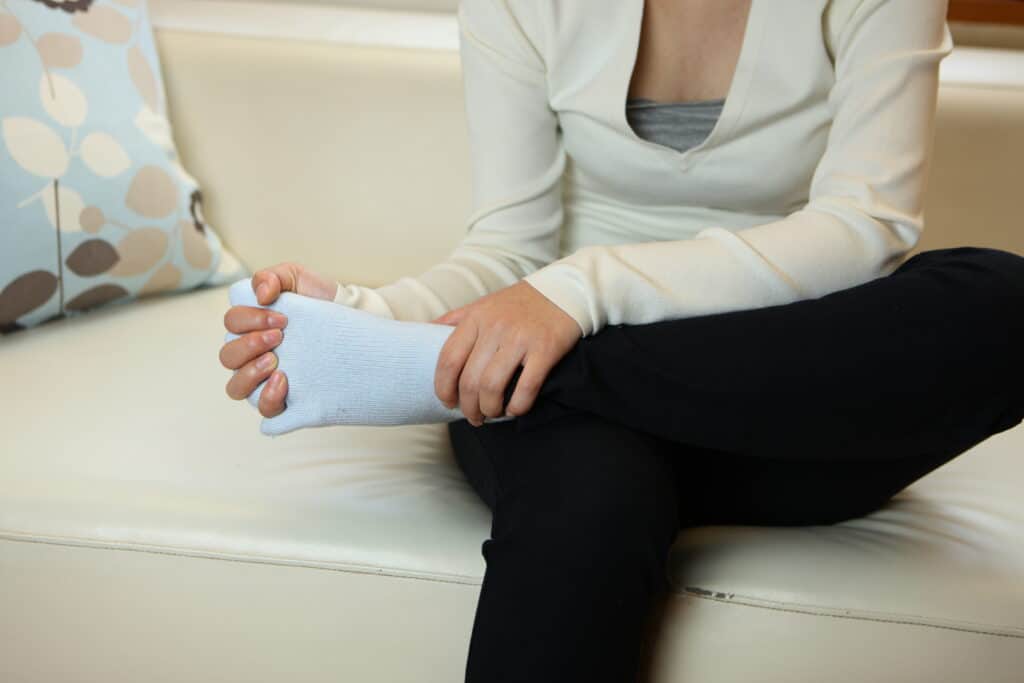
Grip the hand gently so that it is slightly above the base of the toes.
Press the thumb of the foot lightly with the thumb of the hand.
gaffe
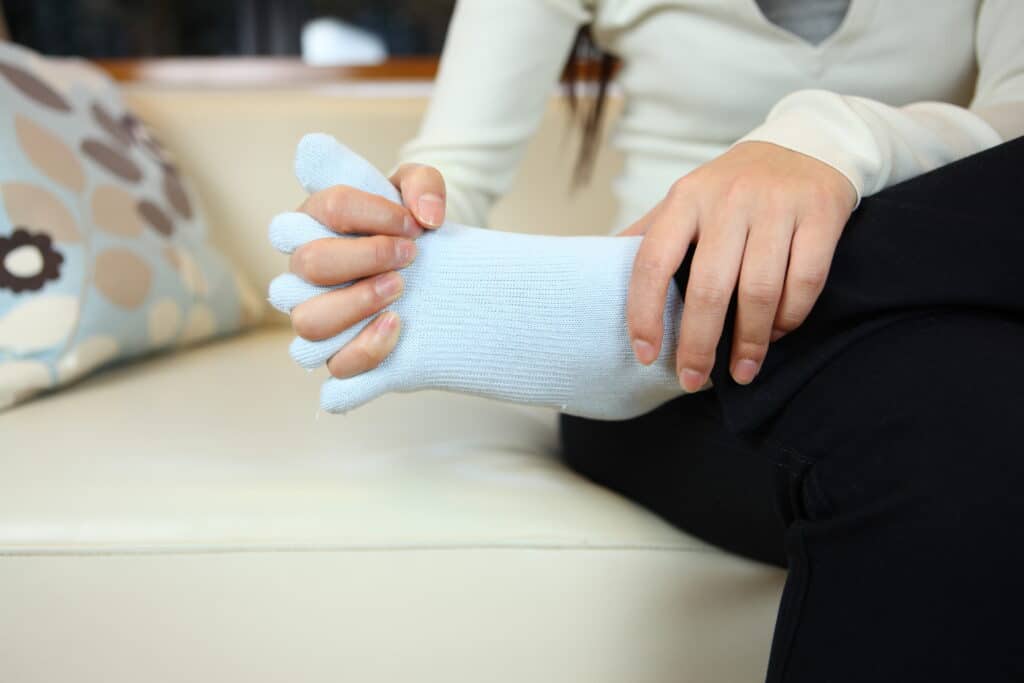
It is difficult to warp when the fingers of the hand are inserted all the way to the base of the foot.
STEP4 Turn your toes toward the instep.
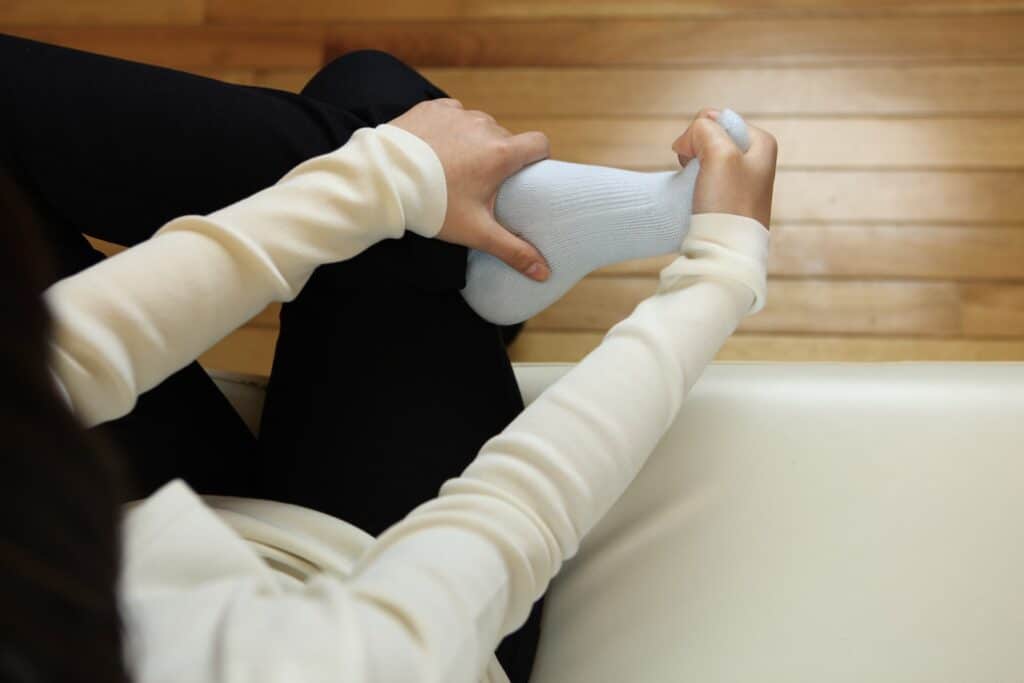
Gently and slowly warp
Press your toes with the base of your hand.
Ideally, the toe joints should be at 90 degrees.
(Do not overdo it if you are stiff)
Once warped, hold for at least 5 seconds.
(If stiff, hold for 30 seconds)
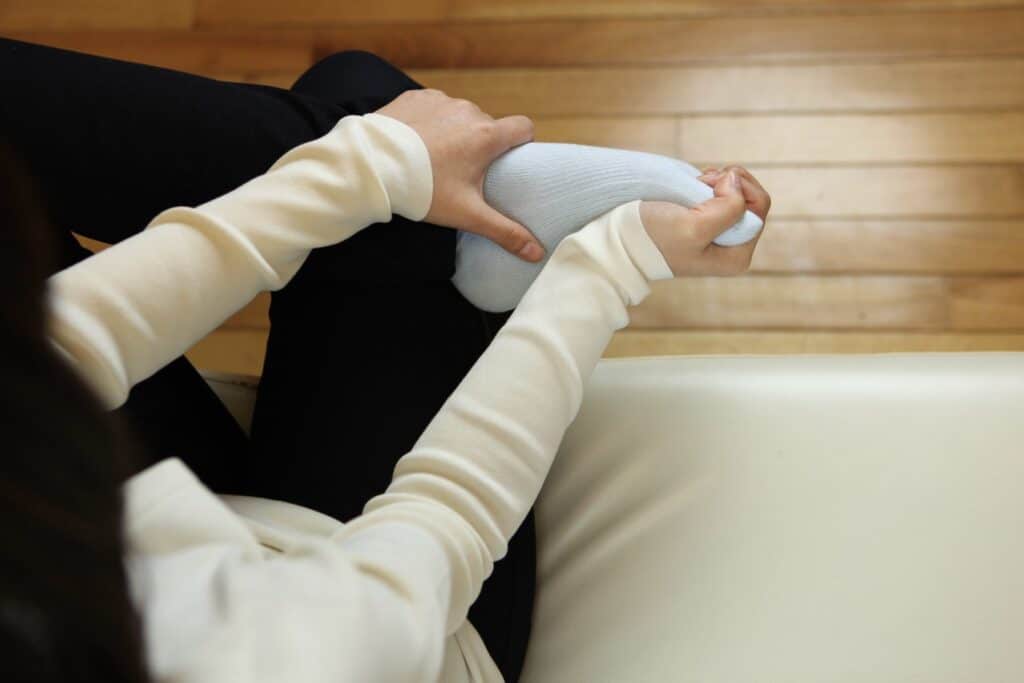
Gently and slowly
Warp the back with the image of stretching the instep.
Press the sole of the foot lightly with the whole palm of your hand.
Once warped, hold for at least 5 seconds.
(Hold for 30 seconds if stiff)
STEP5 Repeat STEP4
After repeating STEP 4, turn the opposite leg in the same manner. It is OK if you can do both legs for at least 5 minutes; if you are stiff, it is more effective to do one leg for 10 minutes.
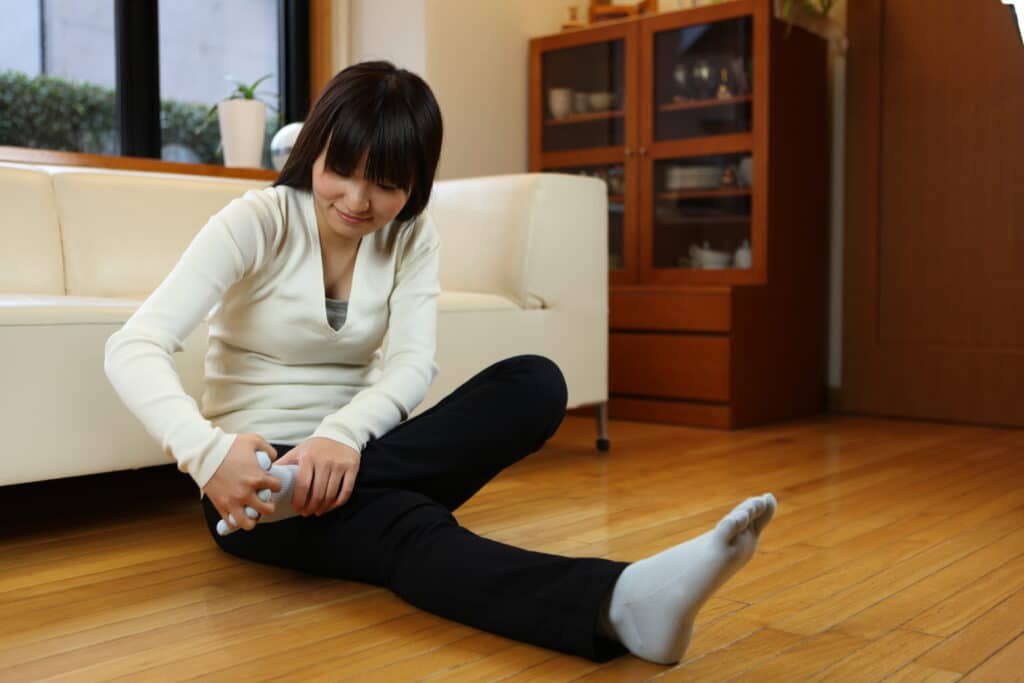
If it is difficult to do it yourself, have someone else do it for you.
Hironoba Gymnastics Application
Corrective support socks to improve toe deformity
State-of-the-art fibers. State-of-the-art construction.
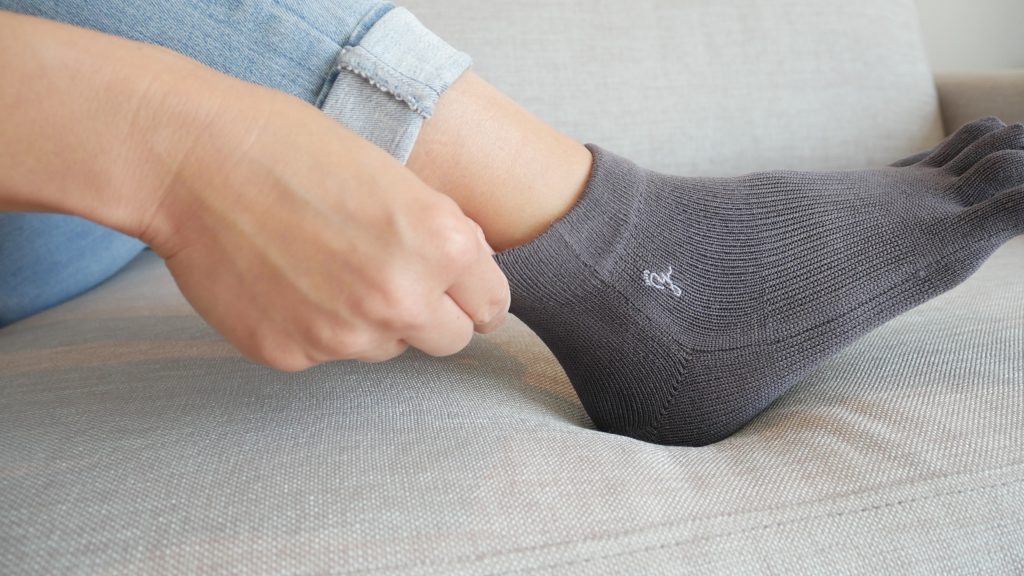
The 19 years of knowledge and experience in foot education that I have accumulated as a physical therapist specializing in toes have been condensed into these 5-toed socks. Simply by wearing the socks, the toes are expanded and stretched, and the body is restored to its natural posture and athletic ability. This is the only reason we developed YOSHIRO SOCKS.
Toes spread naturally just by wearing socks
Shape memory structure that approaches the ideal foot shape
Slip, the biggest cause of toe deformity.
Adoption of special fibers that reduce to the extreme
Physical therapist with a proven track record specializing in toe
Five-finger socks with revolutionary foot education developed by Keiro Yuasa
From thread production to sewing and inspection
Made in Japan with the utmost care
The goal was to,
Human's original straight toes
Shape-memory structure that firmly grounds the floating toe "floating toe
Thus, YOSHIRO SOCKS are made using a special manufacturing method (patent pending) that naturally widens closed toes and straightens bent toes and floating toes just by wearing them.
Shape of YOSHIRO SOCKS
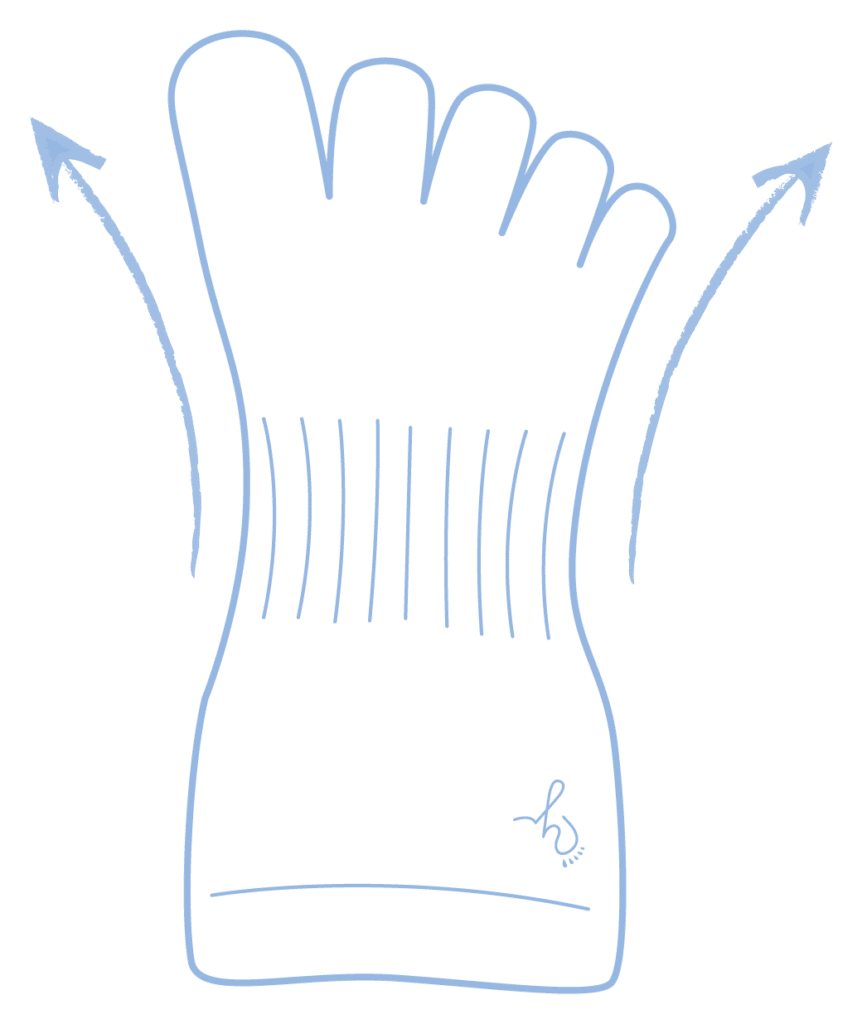
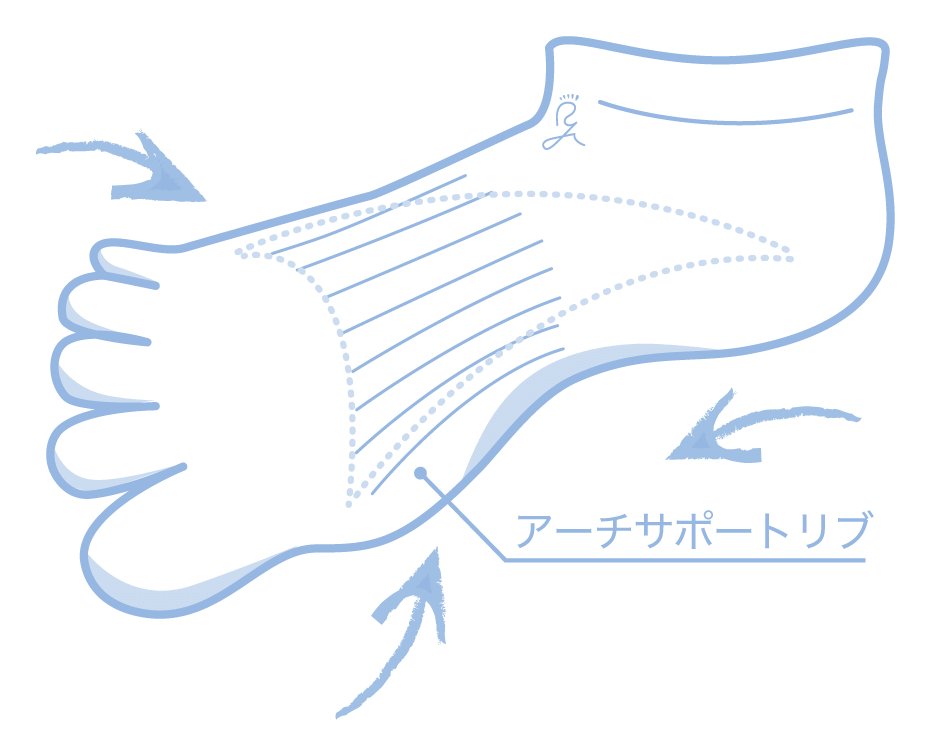
YOSHIRO SOCKS have a special manufacturing method (patent pending) that naturally spreads the toes into an ideal shape, and a shape-memory structure that keeps them in that state.
General 5-finger sock shape
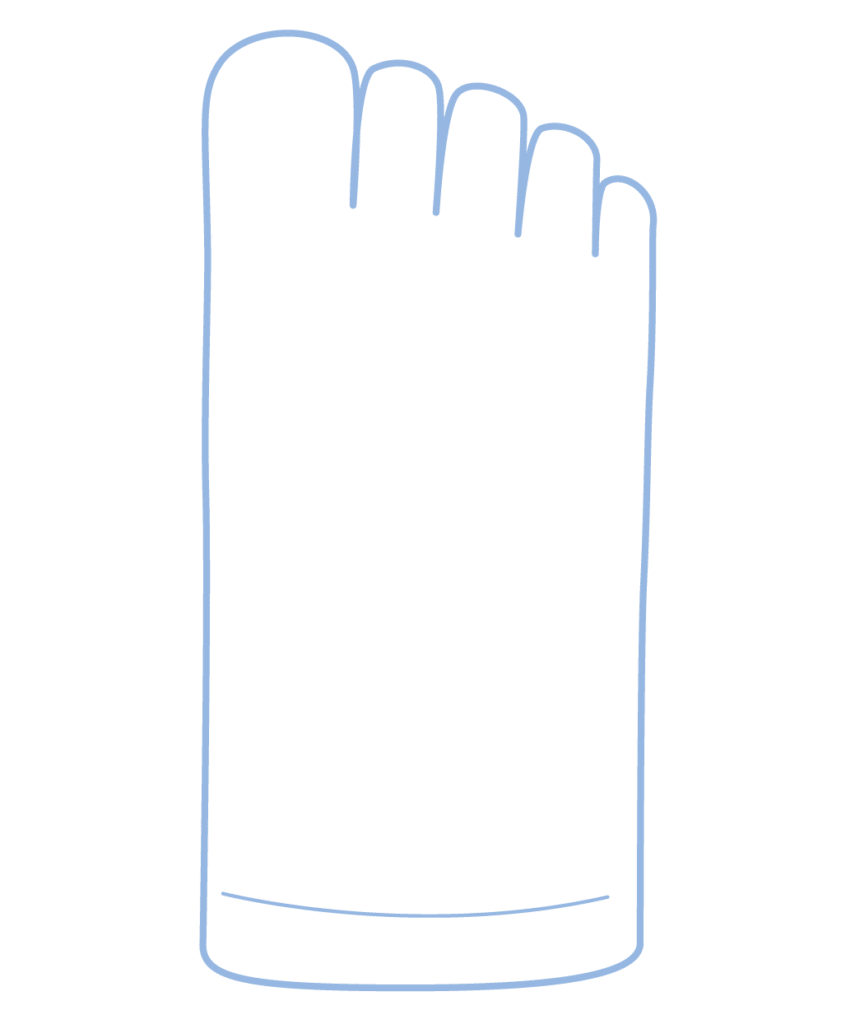
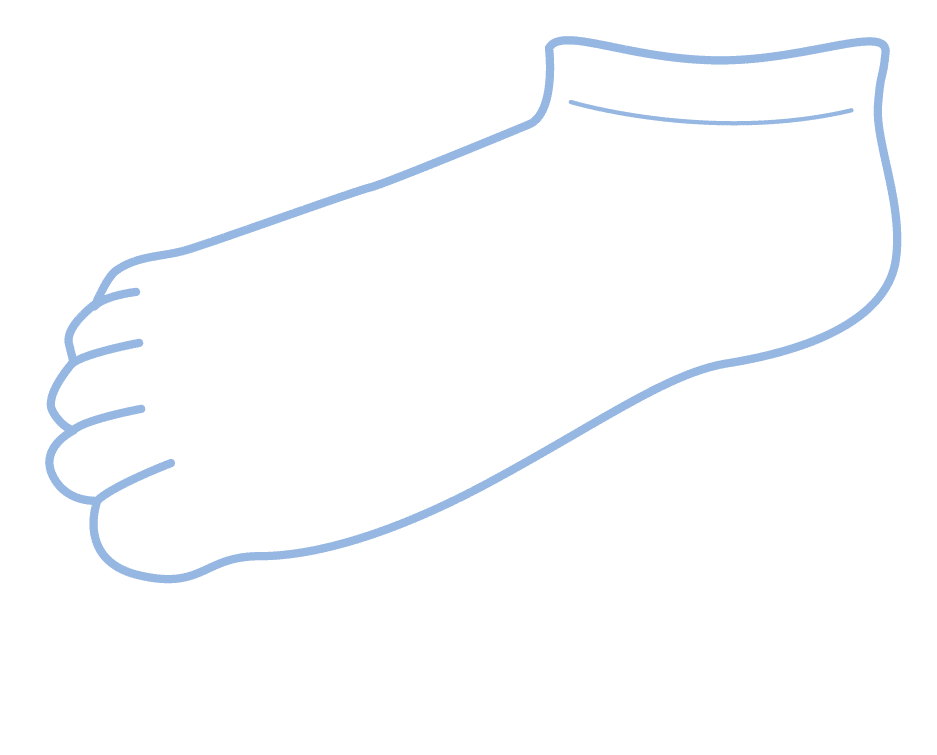
Conventional five-toed socks are woven in a straight line from the top of the foot to the tip of the toes, so they have no corrective power and do not bring the foot closer to the ideal foot.
Special non-slip fibers prevent toe deformities.
The biggest cause of flexion toes (kagayubi), is foot slippage. When the foot slips in the shoe, the toes bend down to apply the brakes. YOSHIRO SOCKS prevent bent toes by weaving in highly slip-resistant fibers.
Up to 1.6 times more slip-resistant performance
With its amazing elasticity, it conforms to any foot shape.
By using a special material with high elasticity in its fibers, YOSHIRO SOCKS are remarkably stretchable.Stretches up to twice as much as the size of YOSHIRO SOCKS when shrunkThe socks can be adjusted to fit any foot shape, including those with severe bunions and hallux valgus. Even if they lose their shape after wearing, they will return to their original designed sock size and shape by washing.Normal commercial five-finger socks are up to 1.2-1.4 timesSo you can see that it is surprisingly elastic in comparison.
Up to 2x expansion and contraction performance
It is environmentally friendly because it is surprisingly durable and long-lasting.
The fibers used in YOSHIRO SOCKS are made of friction-resistant materials. In addition, they also have non-slip properties, so that friction itself is less likely to occur, making YOSHIRO SOCKS up to four times more durable than regular socks.If the lifespan of a normal 5-finger sock is 3 months, some people wear YOSHIRO SOCKS for 12 months without tearing!It is about.
Up to 4 times more durable
Easy to dry and hard to get damp. Consideration has also been given to hygiene.
YOSHIRO SOCKS are also highly absorbent, absorbing 4 times more water than 100% cotton socks and 6 times more than regular 100% polyester socks. They remain comfortable even in shoes that easily become stuffy.
Don't worry even after absorbing a lot of sweat, YOSHIRO SOCKS are quick-drying, so when you take off your shoes, they begin to release sweat quickly. You will immediately feel dry and comfortable again.
Up to 6 times more water absorbent
Made in Japan with the utmost care and attention to detail, one pair at a time.
They are produced at a factory in Japan on a seamless machine called a WHOLEGARMENT® machine (SHIMA SEIKI), and each pair takes a whopping 20 minutes to sew (about 5 times longer than on a standard sock knitting machine). From finishing to packaging, inspection, and shipping, we are committed to making our products in Japan.

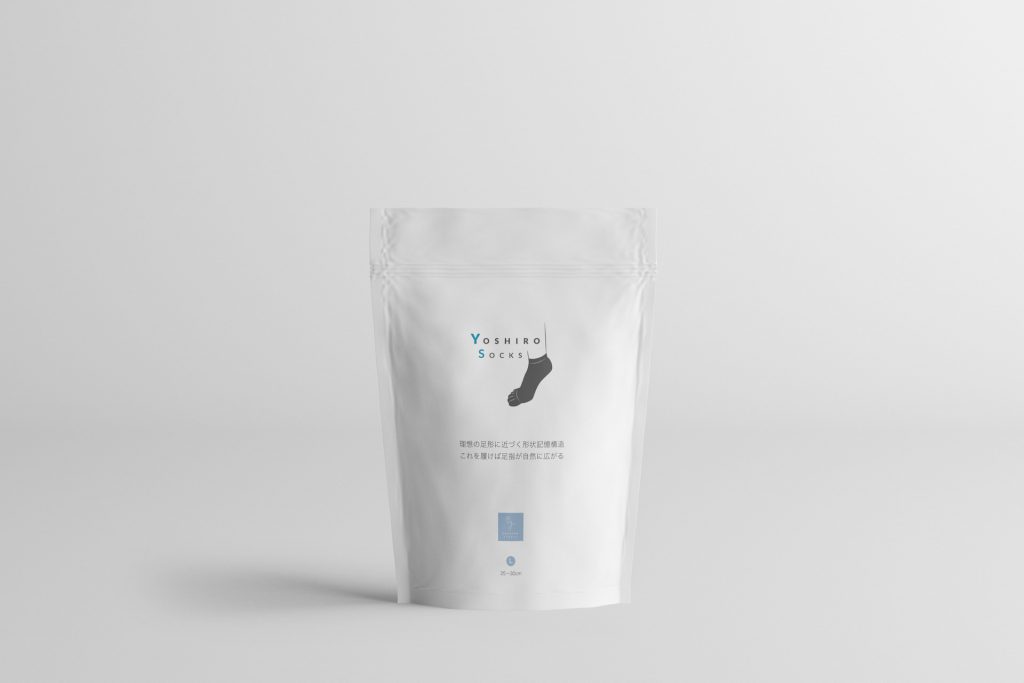
YOSHIRO SOCKS
Price: 3,850 yen (tax included)
Color: white and gray
Size: 3 sizes (S, M, L)
Video on how to put on socks
How to choose shoes
Basically, if you do not wear shoes, you will not walk badly. Barefoot, however, improves the big toe faster because the correct way to walk is unconscious, but in modern society, we are a shoe-wearing culture, so here is how to choose lace-up shoes to improve the big toe.
Does the toe move functionally in the shoe?
Shoes play a major role in toe deformity, and in the case of YOSHIRO STUDIO, the criteria for shoe selection areCan the toes move functionally in the shoe?"The first is If the toes continue to be tight and cannot move, the muscular strength of the entire foot will deteriorate. This can cause open toes, bunions, flat feet, and a variety of systemic symptoms.
Ideally, the shoes should be able to create a barefoot condition. However, if the shoes are too tight, the toes will bend as they try to hold on to the foot that is sliding around in the shoe. Here are some tips for selecting shoes that protect the feet from the ground while at the same time not interfering with the function of the toes.
Five or more doves
Shoelaces have the role of taping the shoe and foot together. The more dovetails (holes through which the laces are threaded), the more difficult it is for the foot to slip inside the shoe, creating an environment that prevents flexing of the toes.The foot is more stable when secured with a flat string that is supported by a surface rather than a round string that is supported by a point.
one's heels are stiff
The heel of a shoe (heel counter) has the same function as the back of a chair. If you drive a car without a backrest, your body will tire quickly. Similarly, if the heel counter is firm enough not to be crushed when pushed by hand, the heel bone of the foot is supported in the shoe, thus stabilizing the foot in the shoe. There will be less lateral blurring and the toes will be less likely to bend.
torsion-free
When walking, a load of two to three times your body weight is placed on your shoes.Soft shoes are like putting your foot on konnyaku. We recommend shoes with a strong core called a "shank" on the bottom that prevents the shoe from twisting.
Toes not protruding from insoles
Take out the insoles and place them on your feet. If your fingers stick out, you are in a tight fit in the shoe, the same condition as if you were wearing high heels.
Shoe size is based on foot length + 1 cm
For the toes to move freely in the shoes,At least 1 cm of excess (discarded) fingertip is required.Measure the length of the left and right foot while standing, and choose shoes that fit the longer foot. If there is an excess of about the width of your index finger between the tip of your toes and the tip of the insole, you are good to go. Note that toe care will increase or decrease the length of the foot, so it is recommended to re-measure every six months.
Regular shoe replacement.
The heel is basically the life of the shoe, so no matter how good the shoe is, if the heel is stepped on or the sole is worn out, it is the life of the shoe. The condition of the shoe expresses the condition of the body, so too much deterioration can put a great burden on the body as well. If the heel of the shoe cannot be repaired,We recommend replacing them every six months to a year.However, even if the correct shoes are selected, if they are worn improperly, the desired effect will not be achieved.
Shoes recommended by Keiro Yuasa
walking shoes
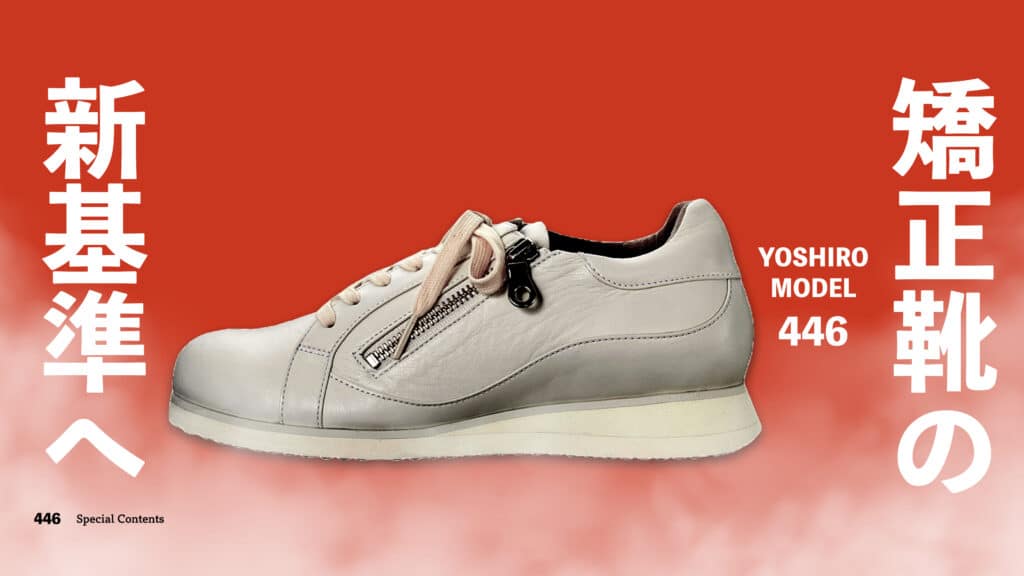
Original shoes jointly developed by Keiro Yuasa and Halmek in pursuit of shoes that exceed the NB1400 for the purpose of correcting feet, posture, and breathing. These are the No. 1 shoes for women.
Pumps for work
Fit Partner
The Fit Partner, developed by BMZ for cabin attendants as a pump that can be run in, is characterized by less fatigue even after long hours of standing or walking long distances.
business shoes
SPH4501WSR
Tsukiboshi is proud to offer Japan's finest handmade business shoes. If the heel is repaired repeatedly, one pair can be used for 10 years, and you will not get tired at all even if you walk for a long time.
Keiro Yuasa's Favorite Shoes
walking shoes
New Balance 990
The comfort that even a 300,000 yen order shoe cannot match is the culmination of NB's technological history and concept, and even the M1400 and M2040 cannot match the true pleasure of this shoe. YOSHIRO MODEL for women, and I think this is the No.1 sneaker for men.
pumps
LOUIS VUITTON
LOUIS VUITTON is well known, but what is less known is that its pumps are made with a wooden pattern for Asian customers. No other heels are so easy to wear once the toes are strengthened.
business shoes
TANINO CRISCI
TANINO CRISCI, a well-known name among those in the know, had a great fit in both pumps and boots. Unfortunately, they were discontinued in 2011 and are no longer available.
How to Thread Shoe Laces
There are two main types of shoelaces: round laces and flat laces. Round laces press down on the instep at a point, while flat laces press down on the instep at a surface, so flat laces are more stable when tightened. There are two types of material: synthetic fiber and pure cotton. While synthetic fibers are stretchy, they have less strength to hold the instep in place. Pure cotton, which does not stretch easily, maintains its holding power and is more durable. Therefore, I use special pure cotton.
Shoelaces are like ligaments that connect bones to bones. When shoelaces are stretched, they fail to hold the foot firmly in the shoe, causing the foot to slip and the toes to become deformed. Therefore,For people with bunions, we recommend replacing shoelaces before they stretch (every 1-3 months).
Tighten the laces in a standing position.
There are many ways to tie a knot, but in this article, we will introduce the "overlap method" for walking. In this method, the knot is threaded from the front side to the back side of the shoe laces. The last knot near the ankle is tied from the back side to the front side. Tie the knot, taking care to make the left and right sides as even as possible. Ideally, have someone tie the knot while you are standing (or sitting if you are weight-bearing), but if you are alone, just make sure to tie the last knot securely.
How to use the cord stopper
There is a convenient way to put on and take off shoelaces using laces. This may make you like laced shoes because you don't have to bother with tying and untieing the laces.
How to make insoles
Pig skin prevents slipping in shoes
Synthetic fibers and high-grade, good-looking, slippery leather are unsuitable for insoles.Once you take out the insoles from your own shoes. Put on your socks and try to slide your feet on the insoles. If it is slippery enough to slide on the floor barefoot, there is no problem, but in most cases, you will find that it slips on smoothly. In the case of pigskin, which is considered to be the closest to human skin, the skin has a grain called a grain, which creates moderate friction and makes it particularly difficult to slip. Slippery feet can cause deformities of the toes, which can lead to open toes and bunions,Preventing slippage is important for improving the big toe.Of course, the shape of the insole itself is also important to support the sole. However, it is even better if you pay attention to the surface material of the insole.
How to make pigskin insoles
This video explains how to customize insoles with pigskin. We hope you find it helpful.
Regular replacement.
If you continue to use the pigskin, the surface will also become slippery and your feet will gradually slide on it. If possible, try to replace the pigskin once every six months. There are two sides of pigskin, the suede side and the suede side, but basically either side can be used. The suede side is raised and has a very high non-slip effect, but it is more difficult to put on when putting on shoes, so we recommend using the suede side as the surface if the shoe opening is wide.
one's walk
Walking without heel landing on the straw uses the toes. On the other hand, a big toe heel landing does not use the toes. Therefore, leg distortion tends to increase. If the outer soles of your shoes are worn down, you should expect this tendency. If your work requires you to walk in this manner, try walking with a small step at the end of the day as if you were brushing your teeth.
To develop the habit of walking with a small step, try walking backward first. Once you have a feeling that your stride naturally becomes smaller and you can kick the floor with your toes, try walking forward with the same stride and speed.That is the secret to making your body learn to walk with a small gait.
Can you describe the feeling as if you were wearing a kimono and walking with your knees below your knees? Or try walking around the house so that you don't hear the flooring. You should naturally walk in a small stride, using the entire sole of your foot. If you continue this way of walking for five minutes every day, you will naturally build up the muscles in your feet and improve your walking balance. You will have a healthy and graceful gait.
Use the entire sole of the foot with a small crotch.
The human body can use the correct muscles of the whole body (use muscles equally in front, back, left, and right) by walking with the toes, but shoes, socks, and the way we walk make it difficult for us to perform this function. Some of you may have suffered from knee or back problems due to walking, but that is because you have been walking with your toes bent. We hope that you will realize that walking with your toes spread apart will improve the distortion of your body through walking.
Aim for 8,000 steps.
I have treated a total of 60,000 patients, and the borderline number of steps to cure bunions is 6,000 steps per day. 8,000 steps is a relatively fast improvement. Please try to take as many steps as possible in your daily life. Please consider that the number of steps taken indoors does not translate to the number of steps taken indoors, as the toes are used in a different way.
